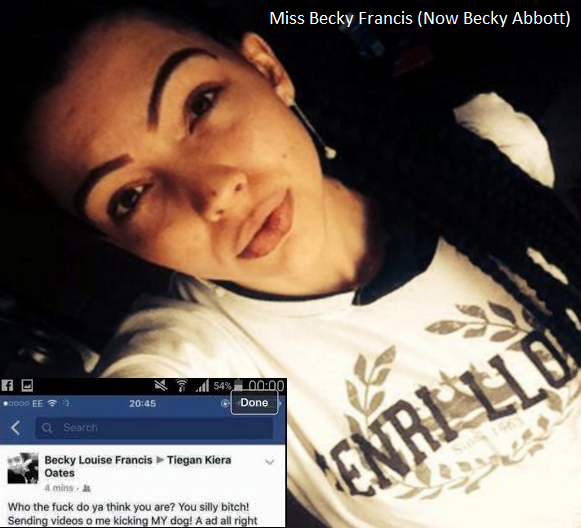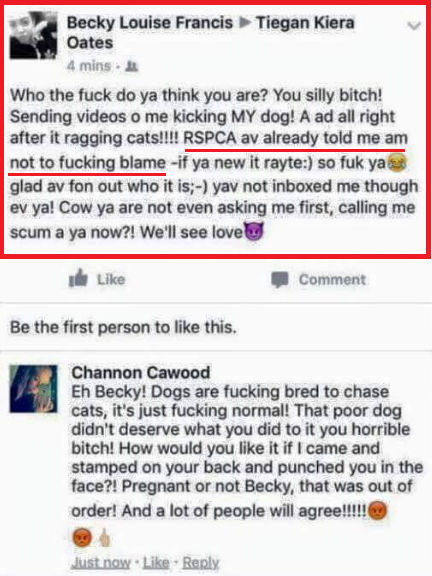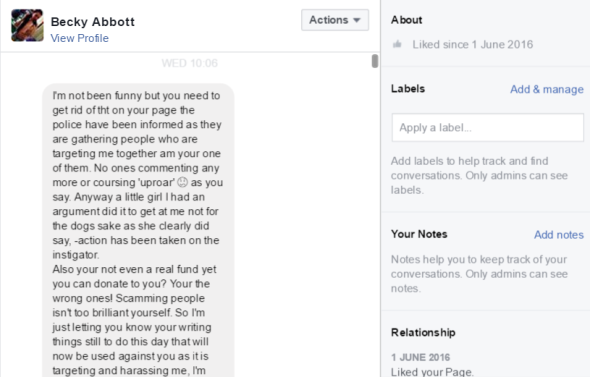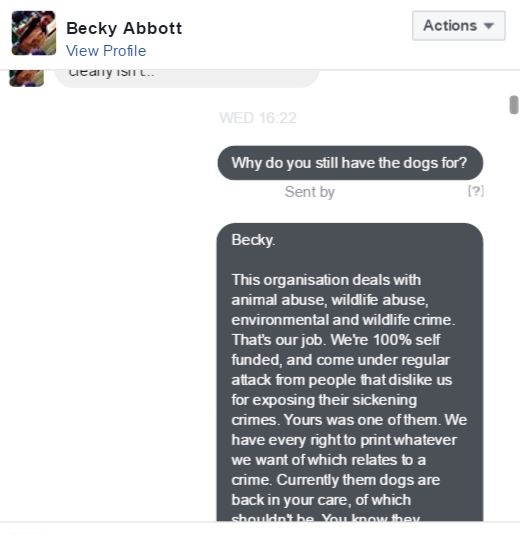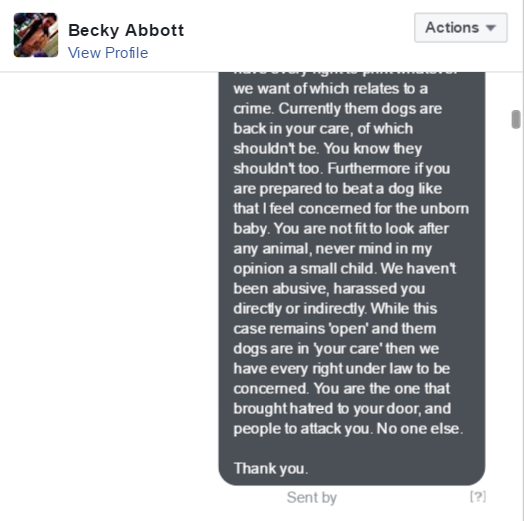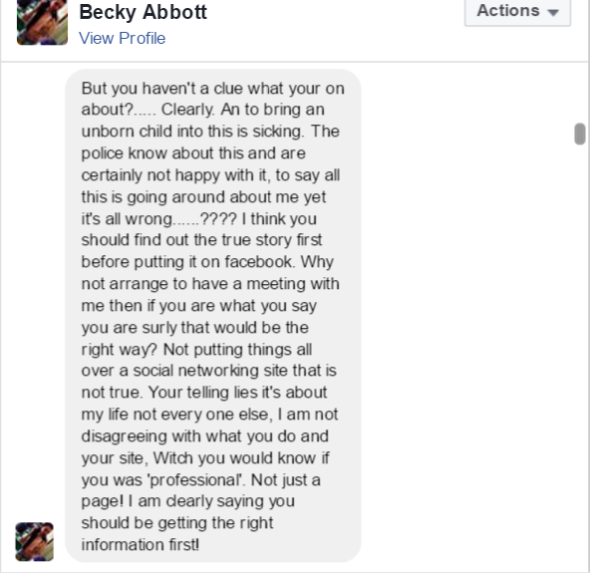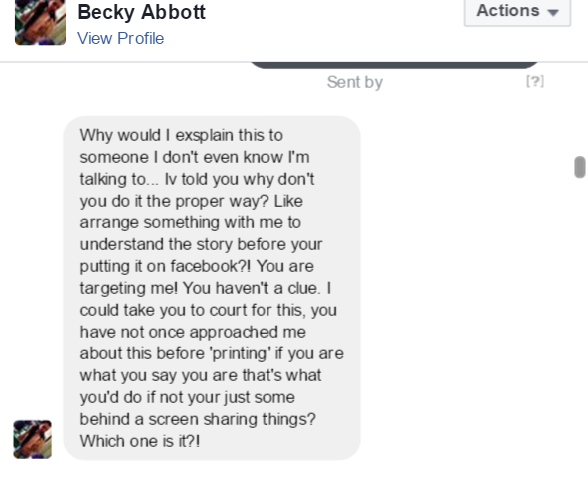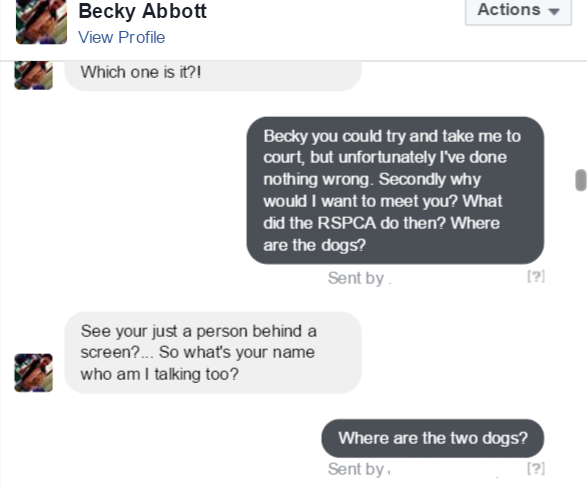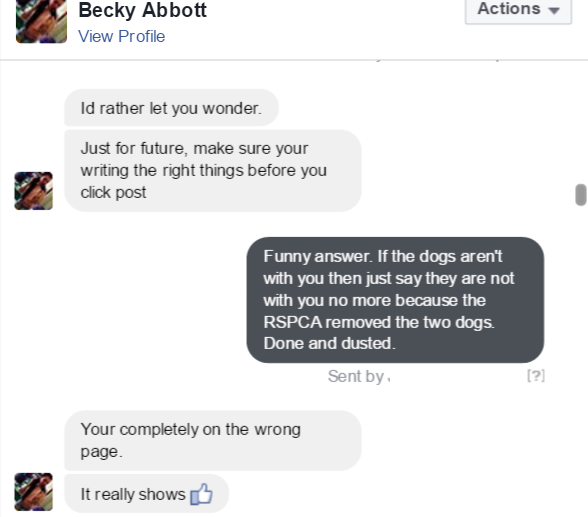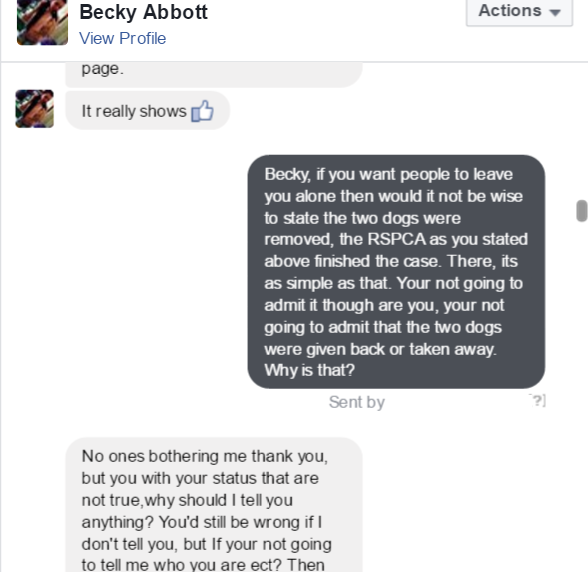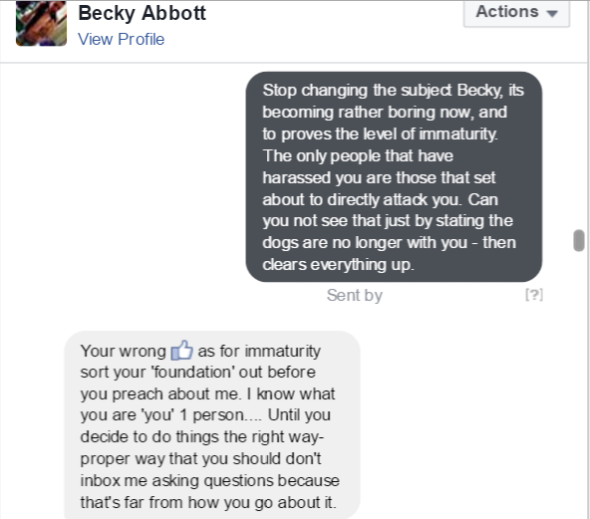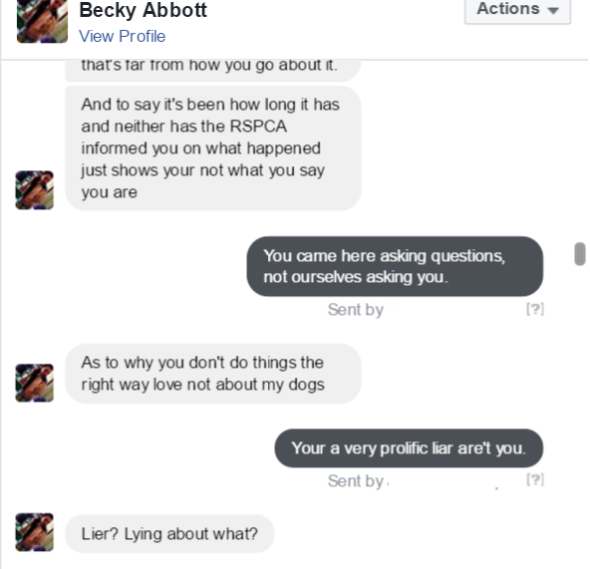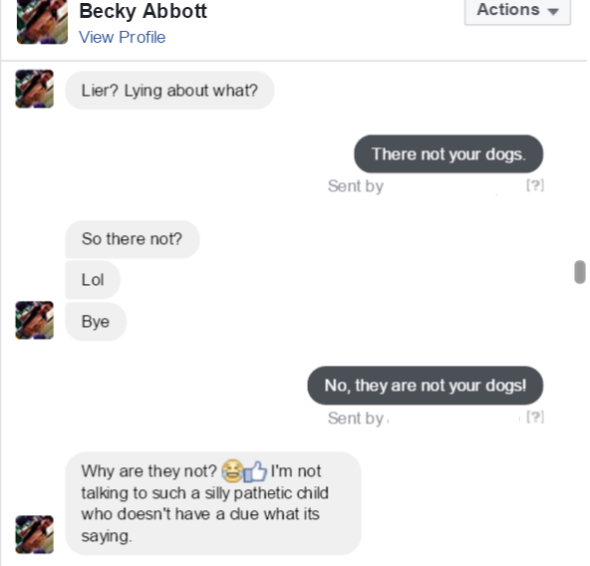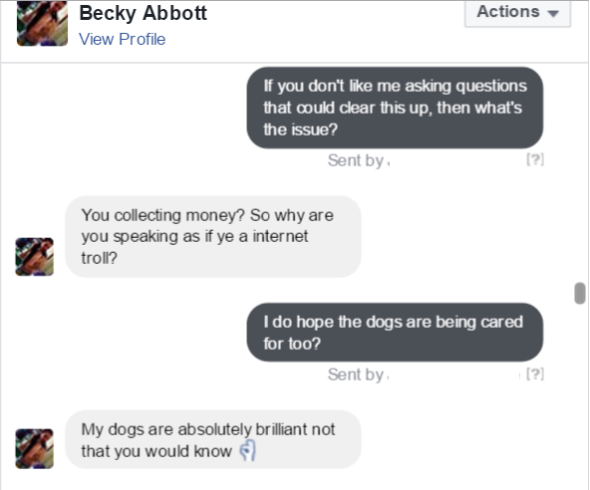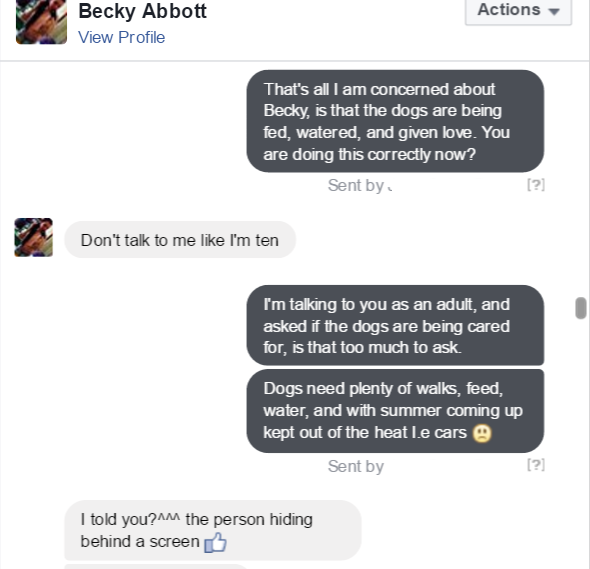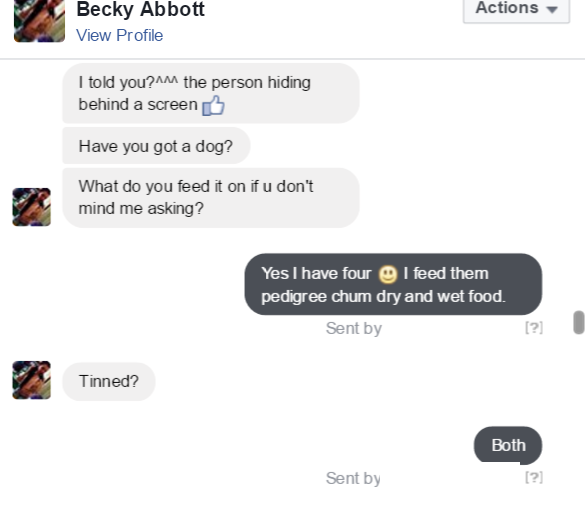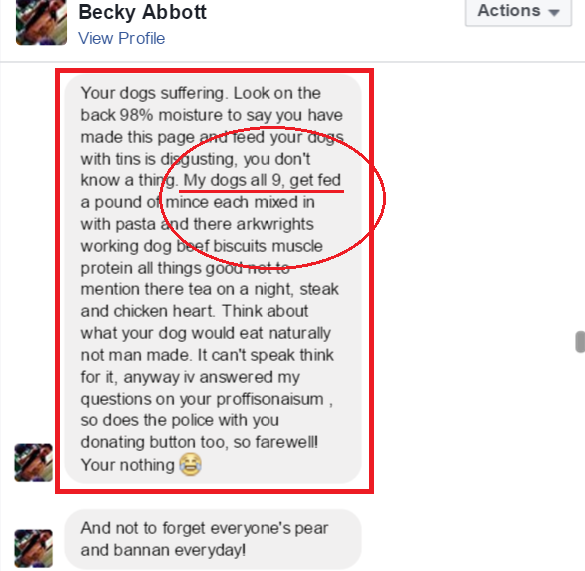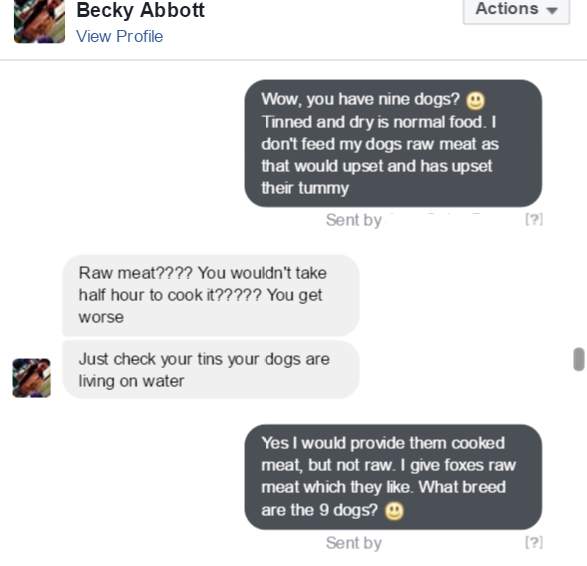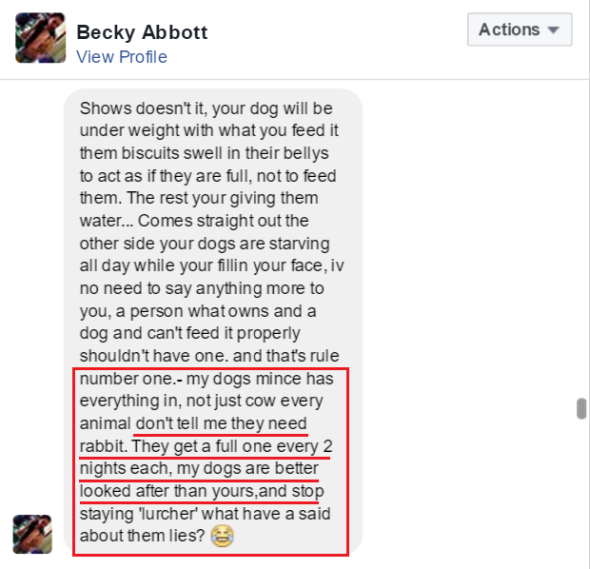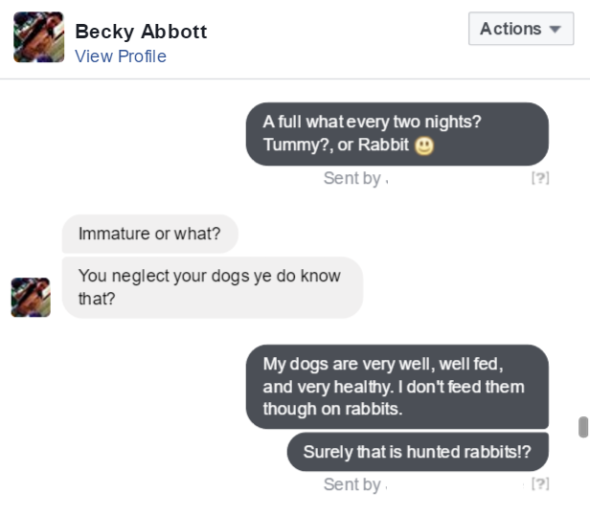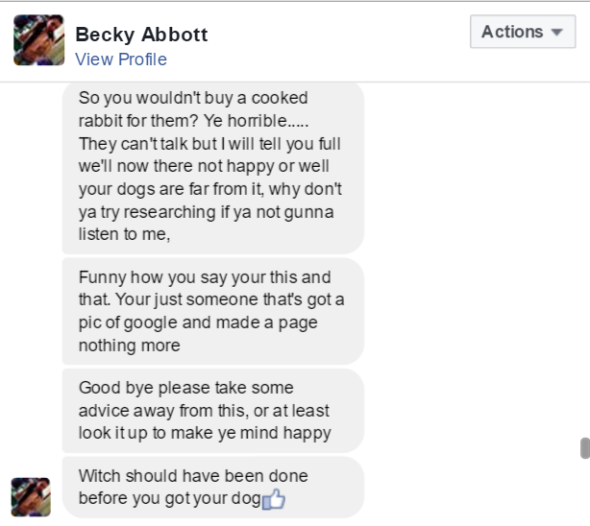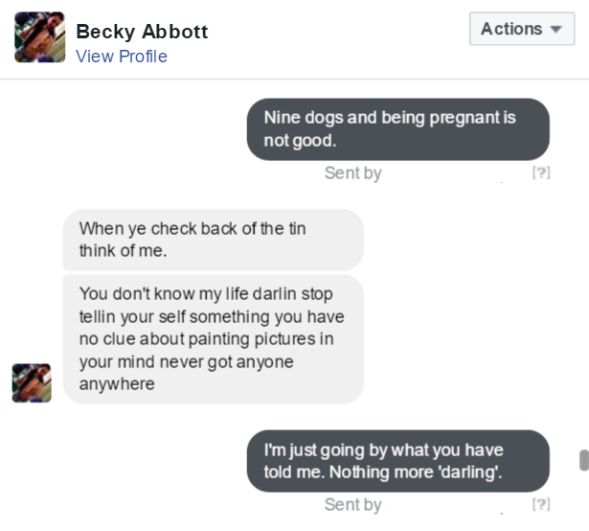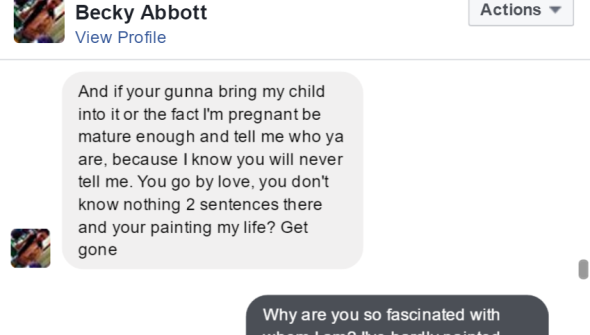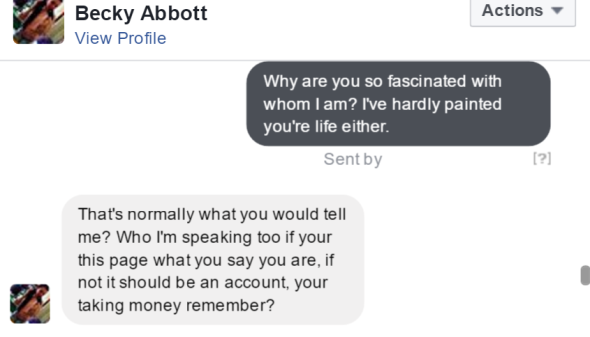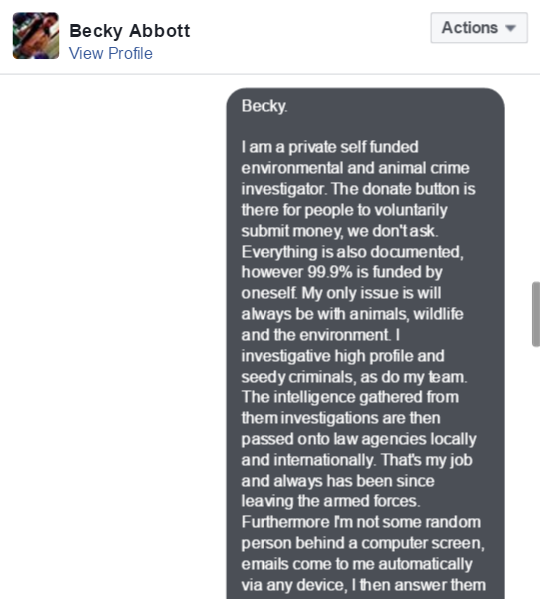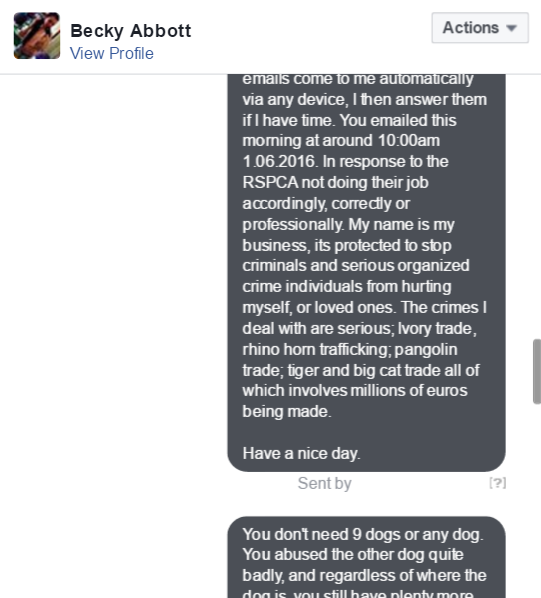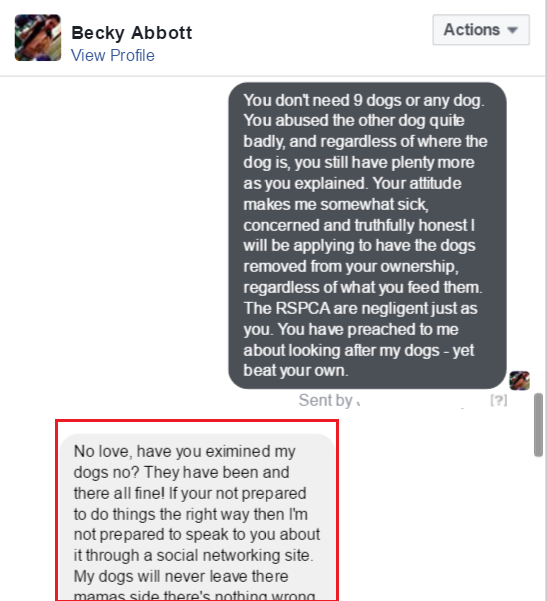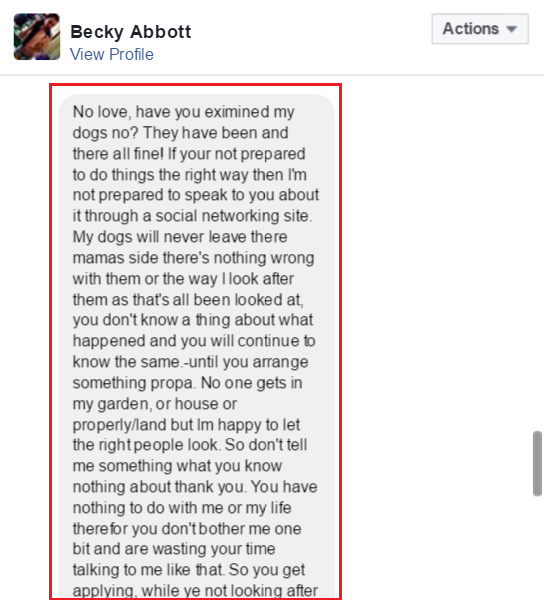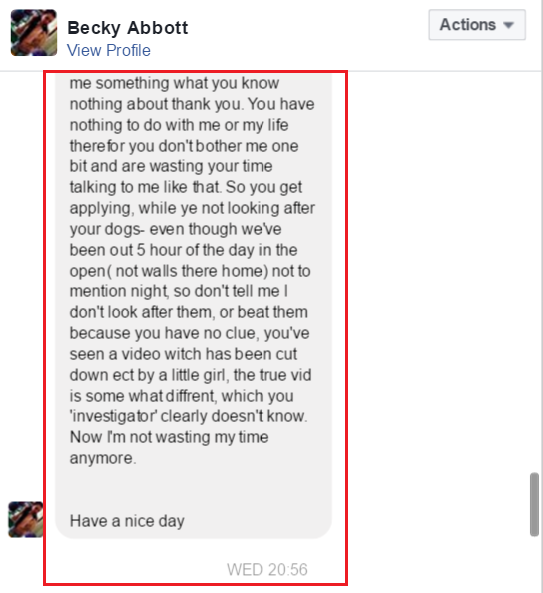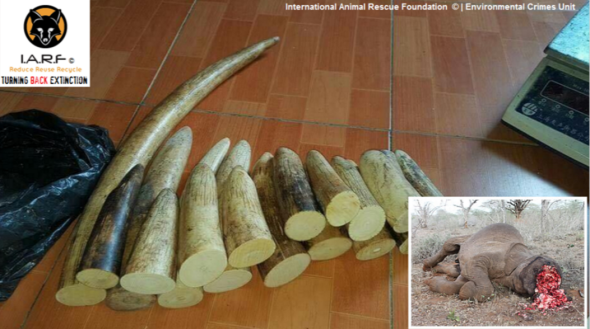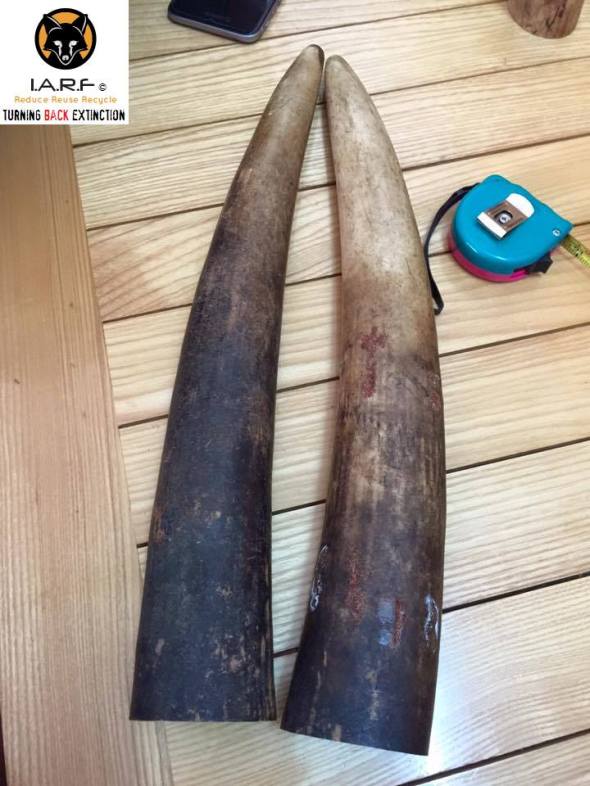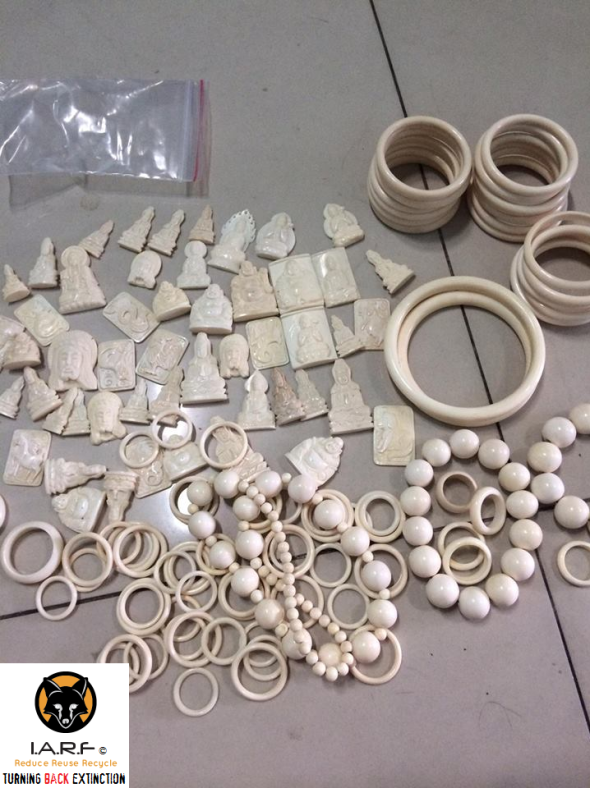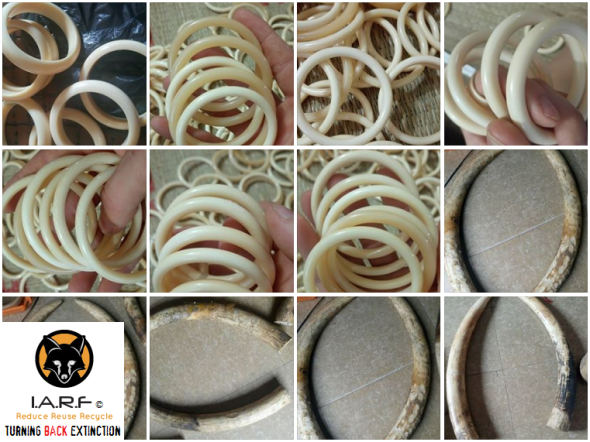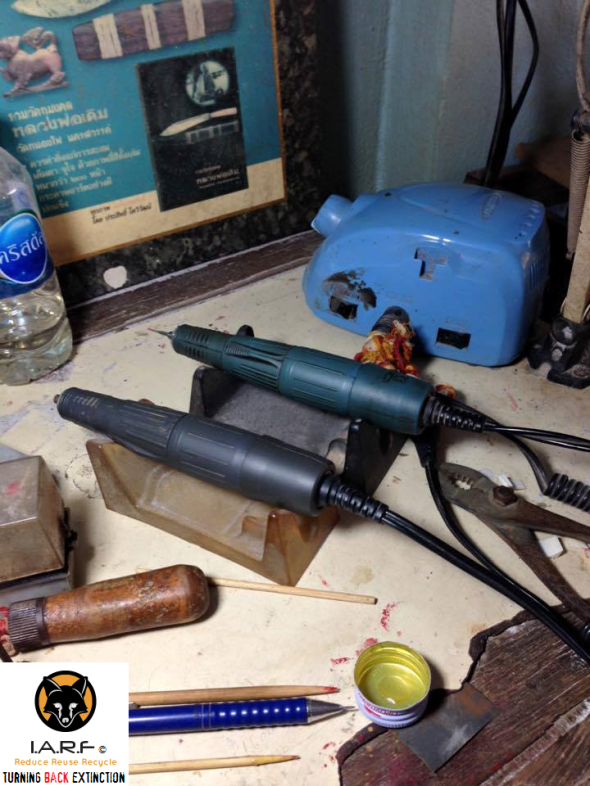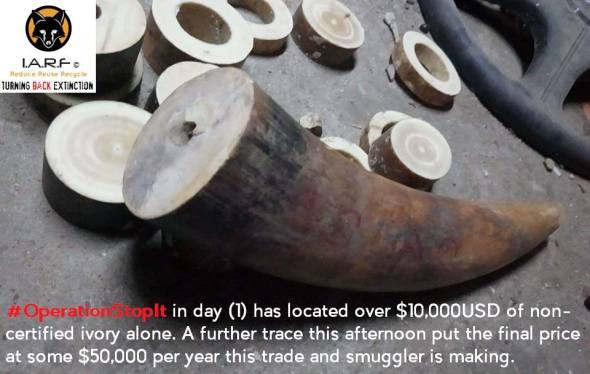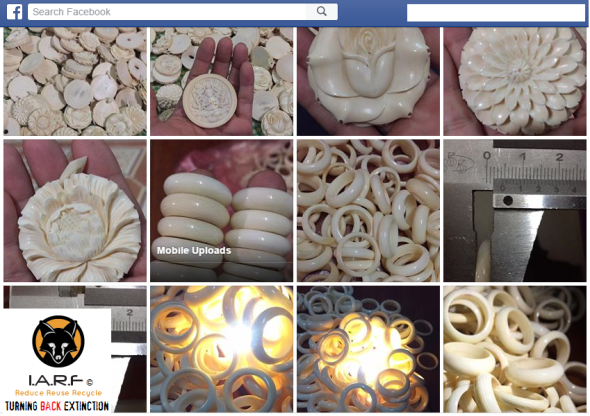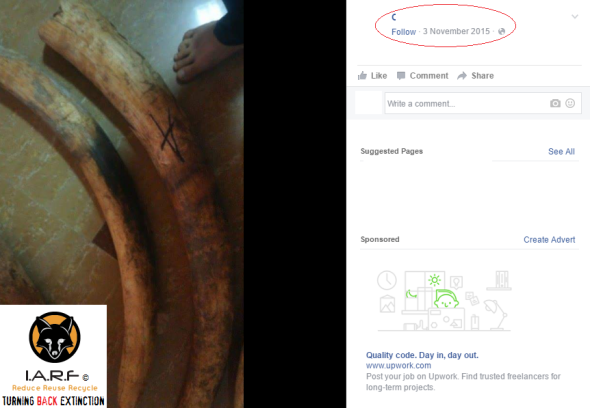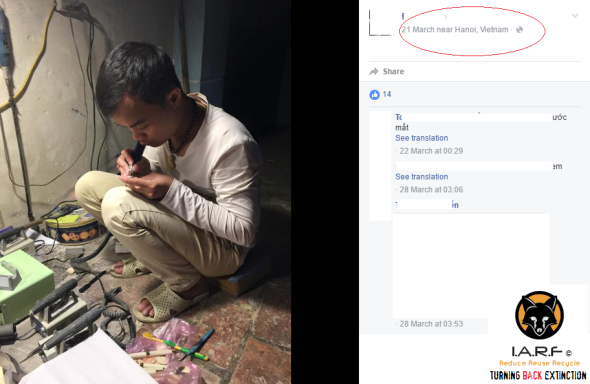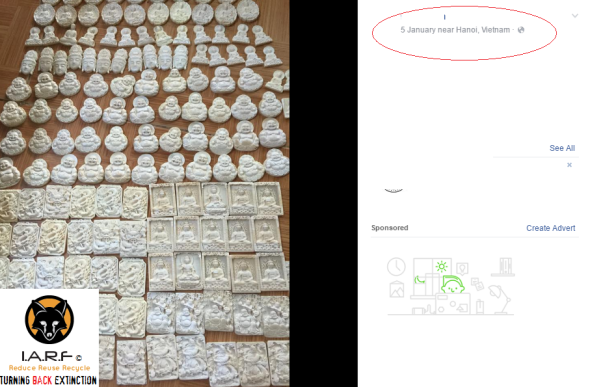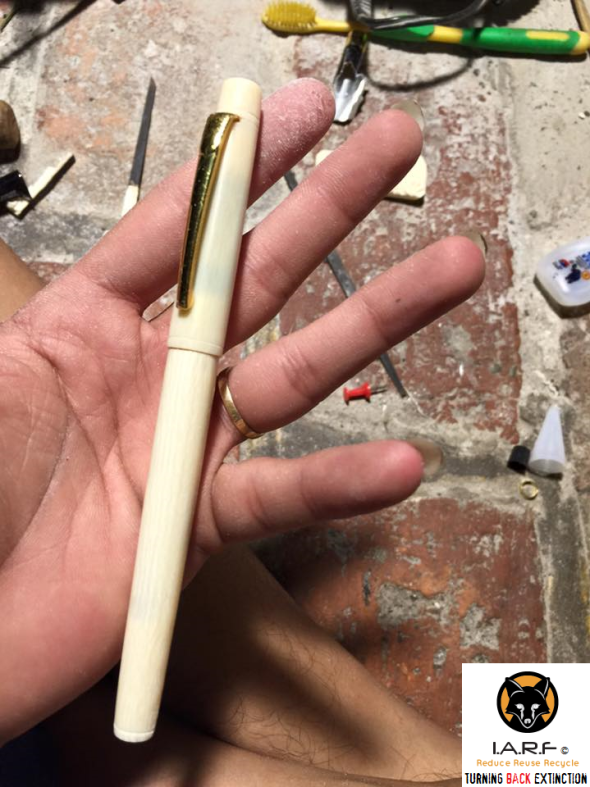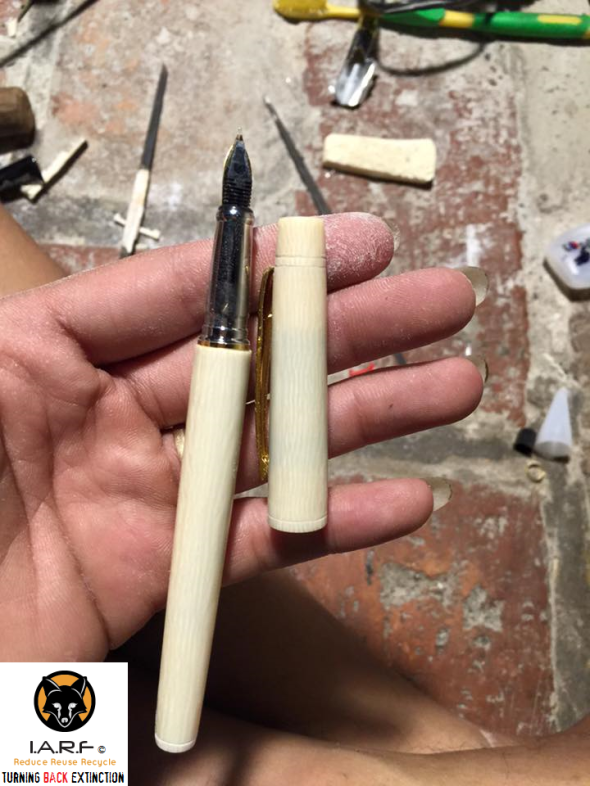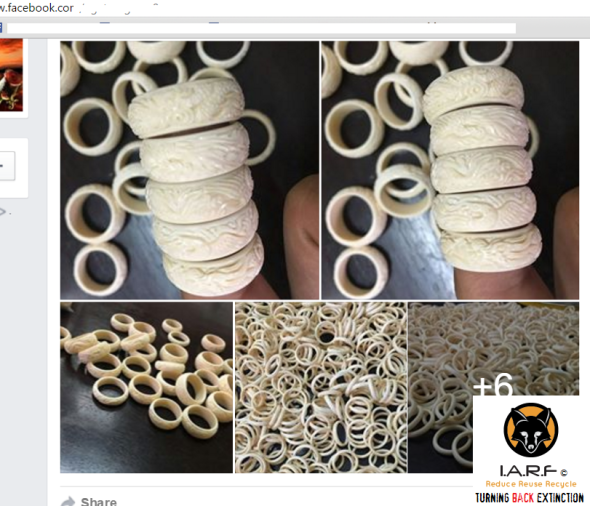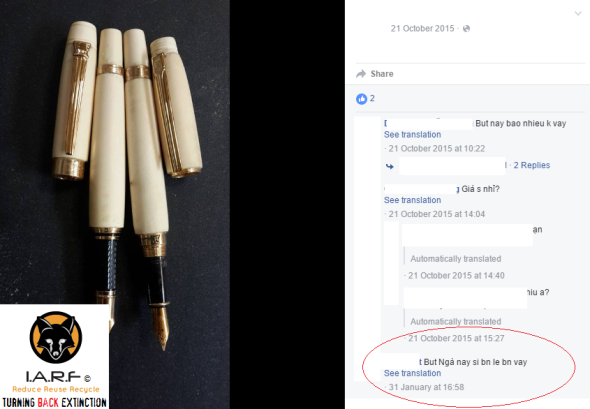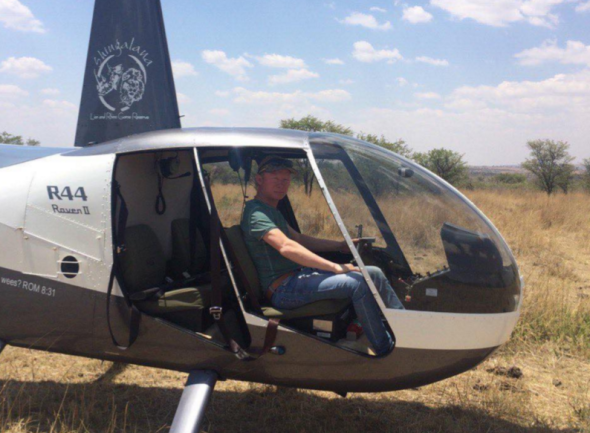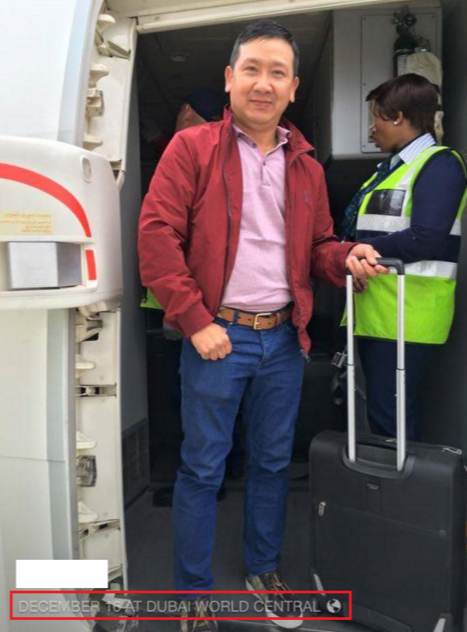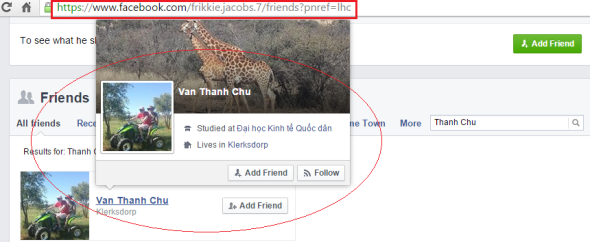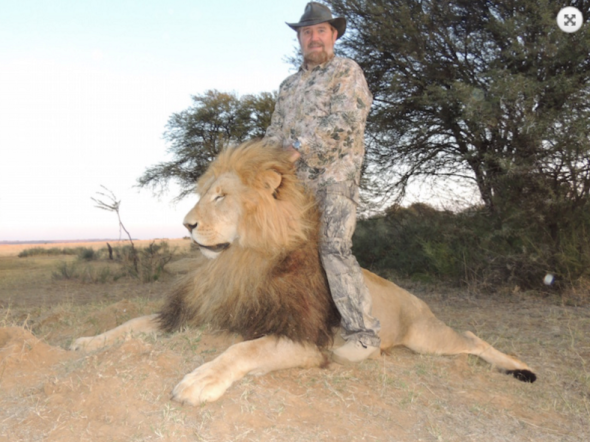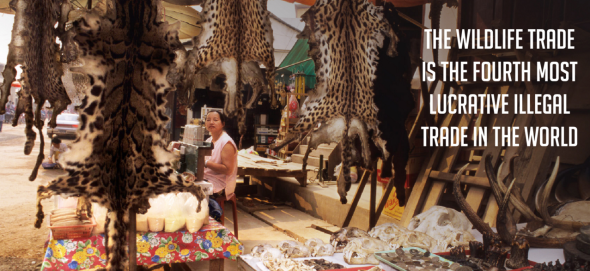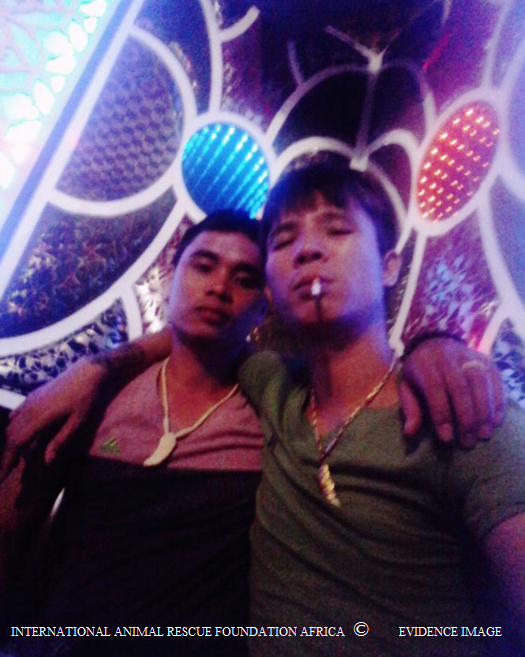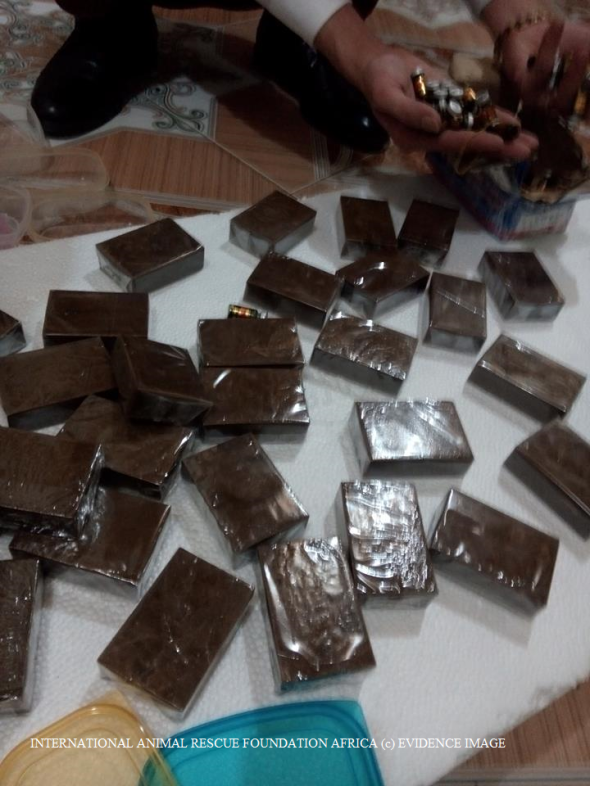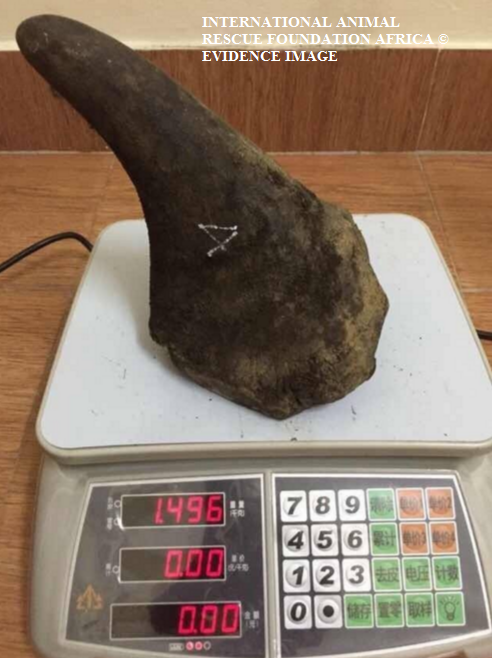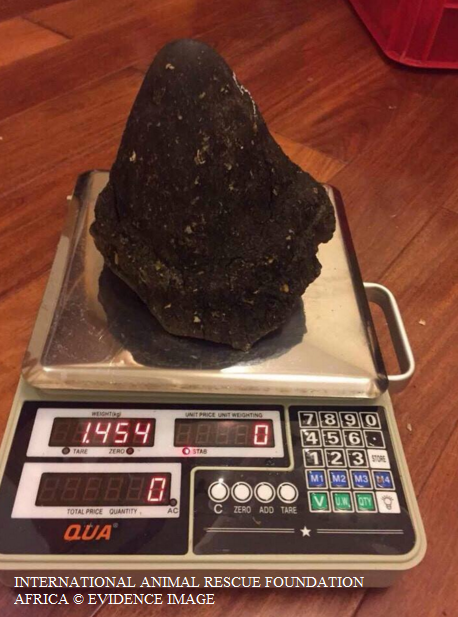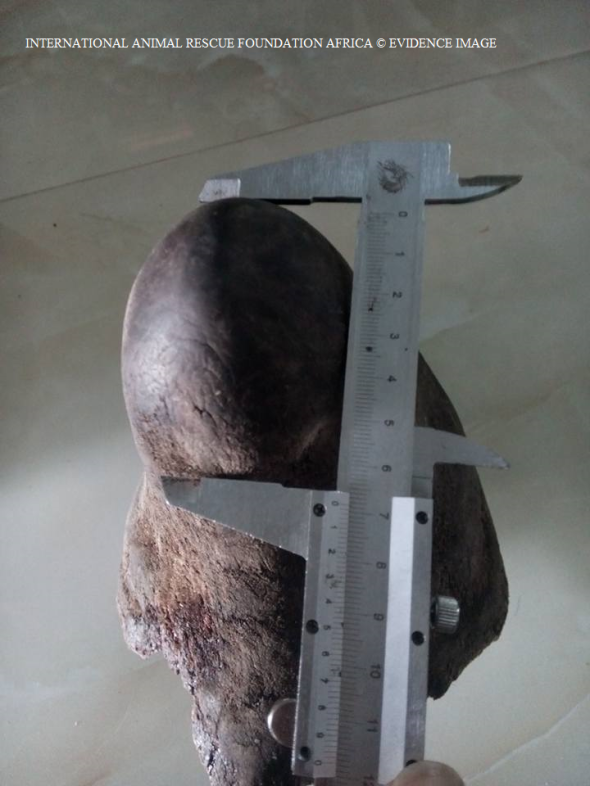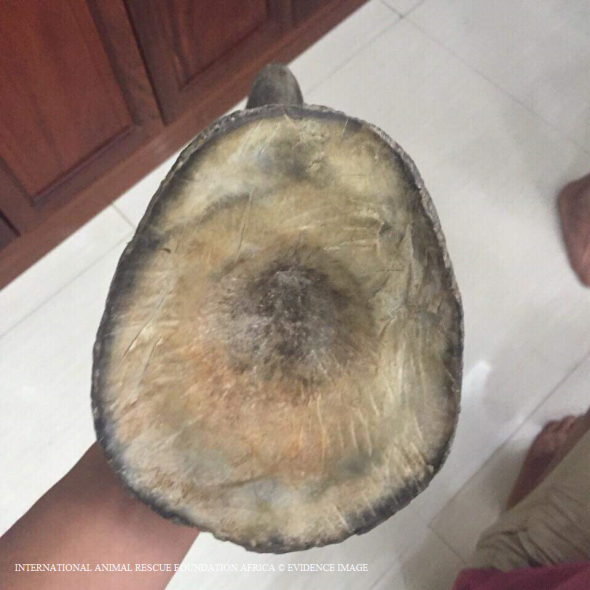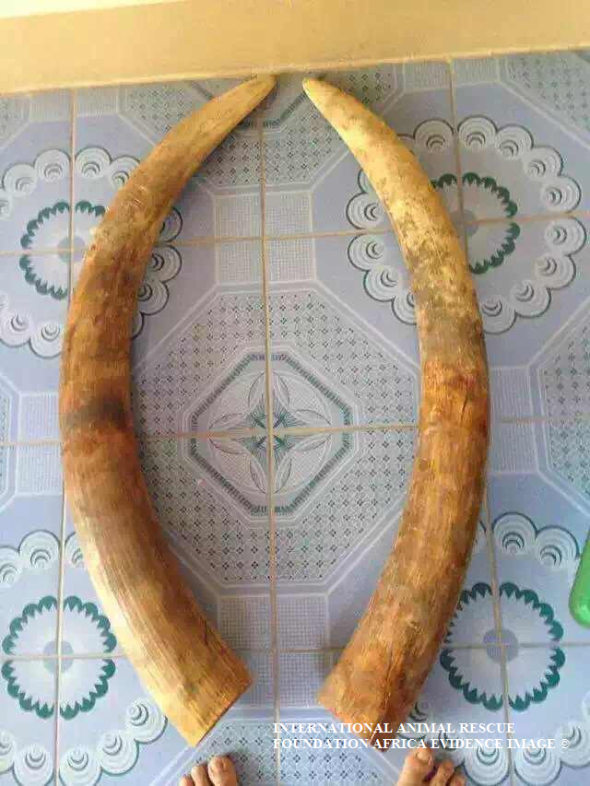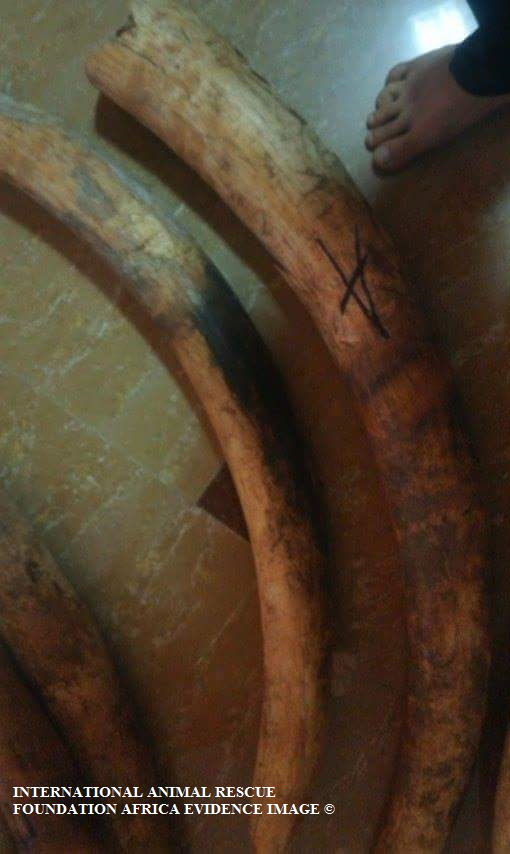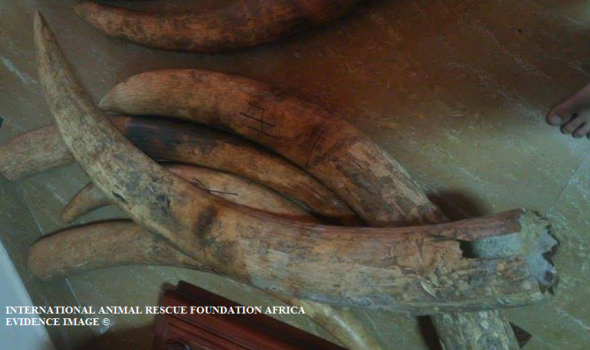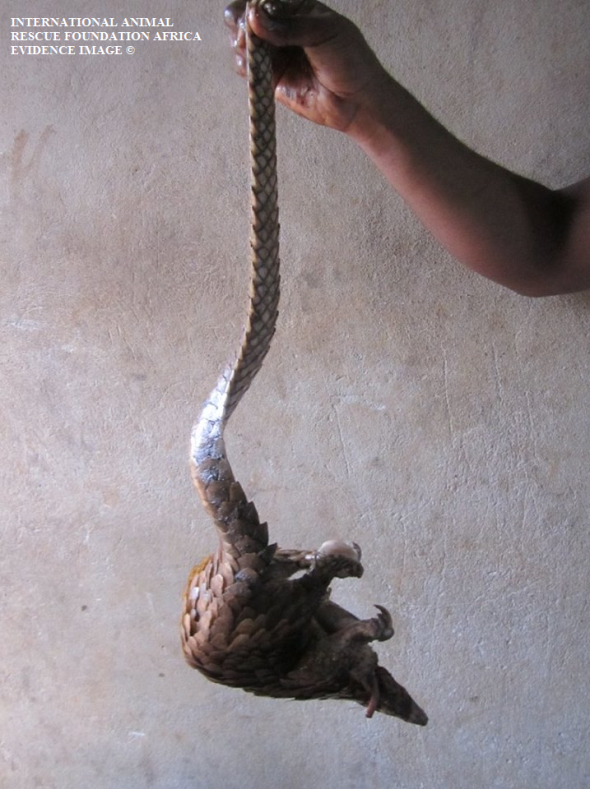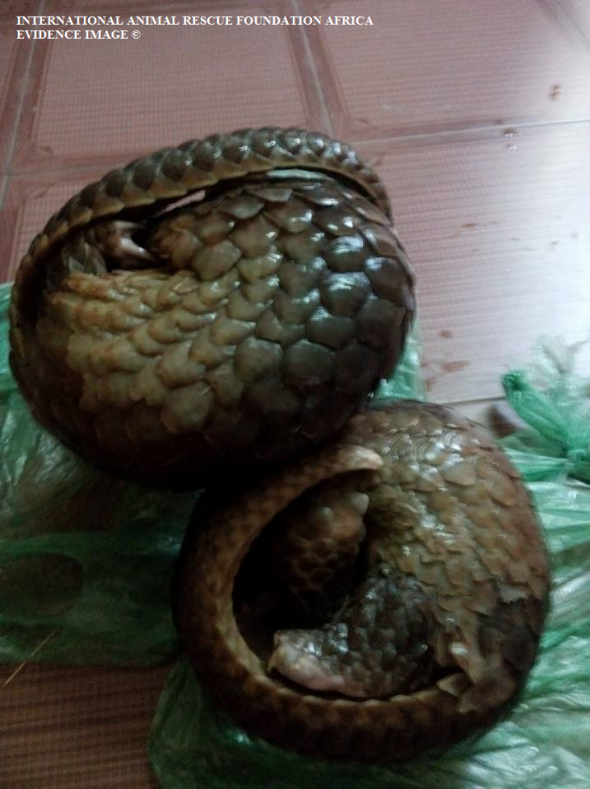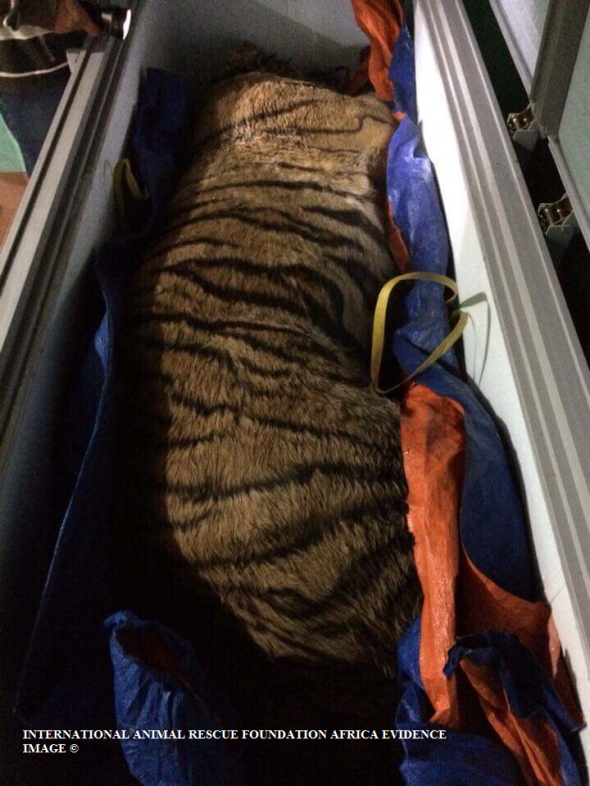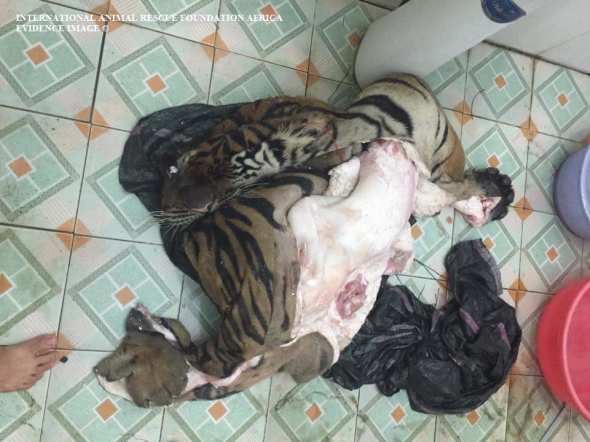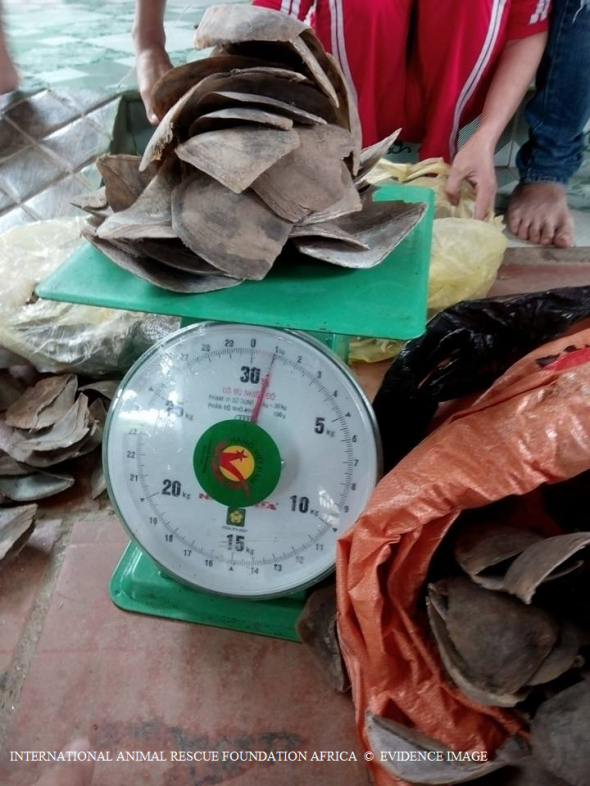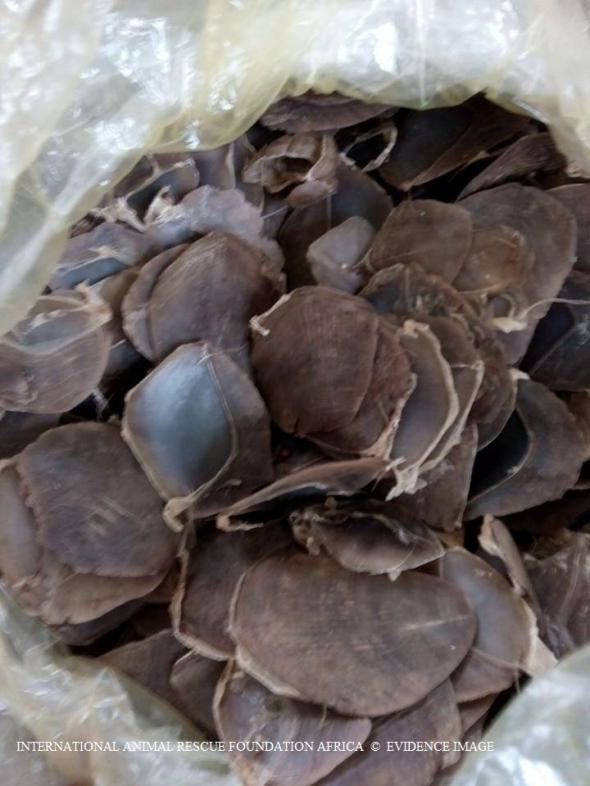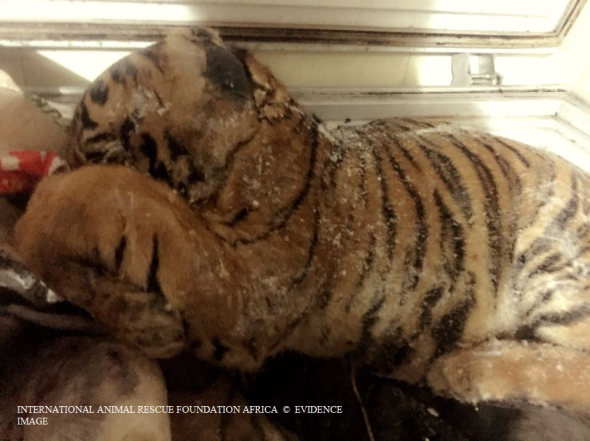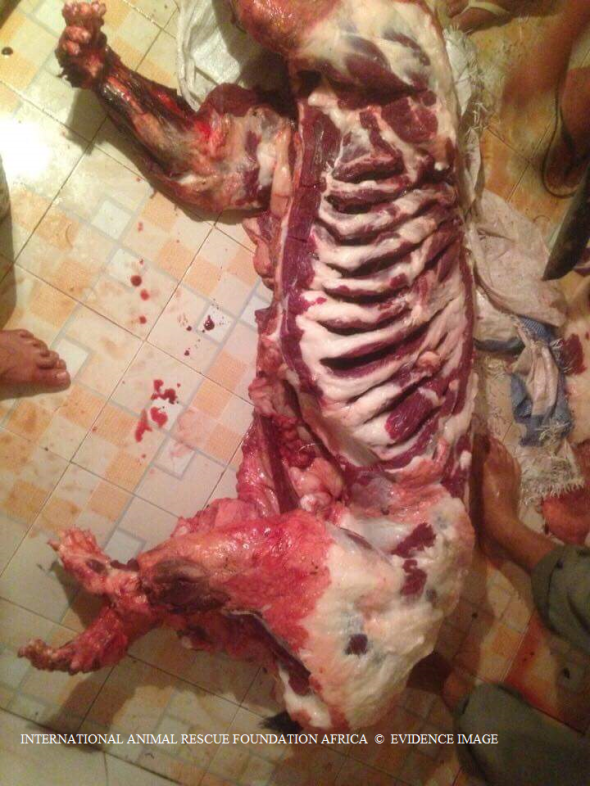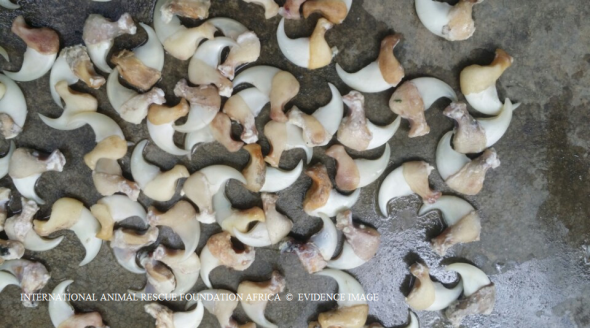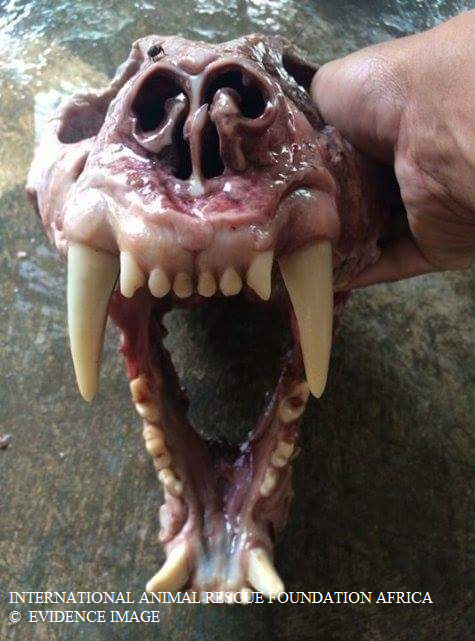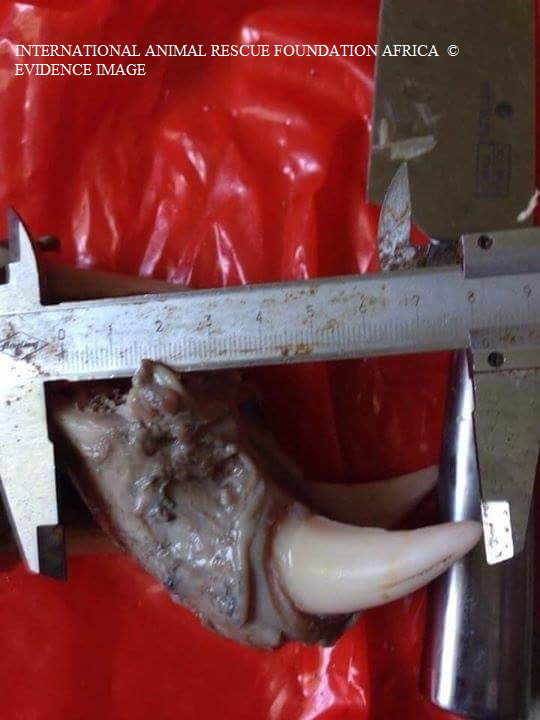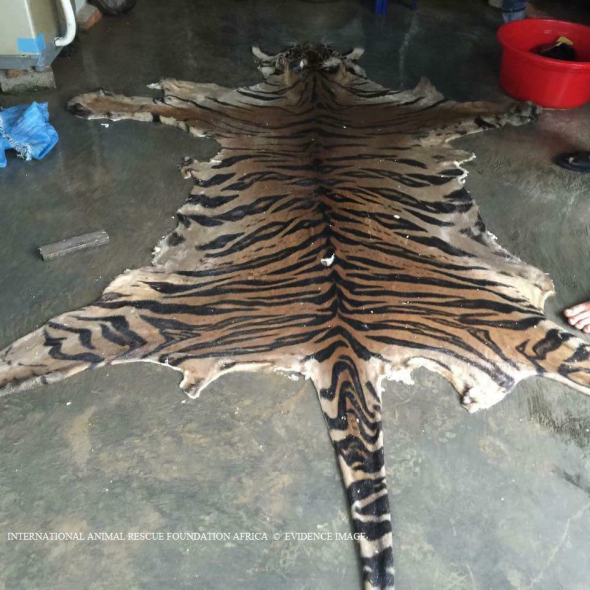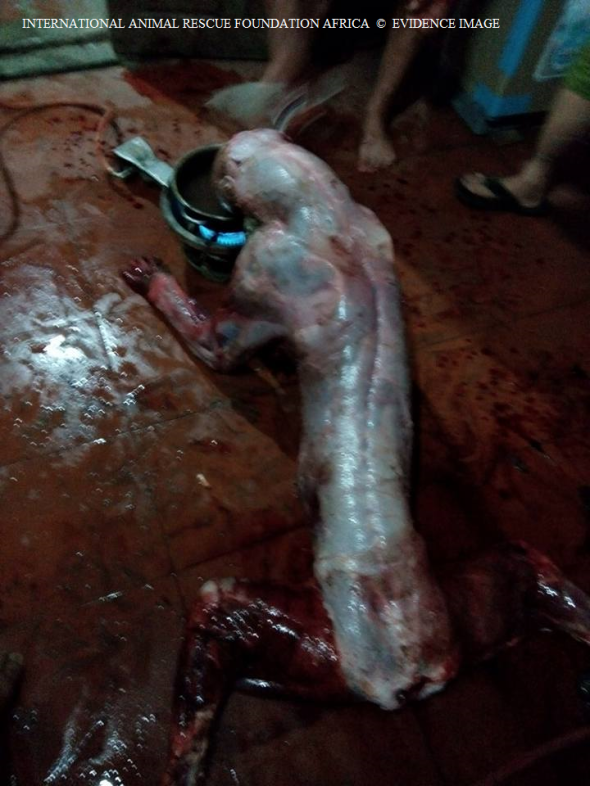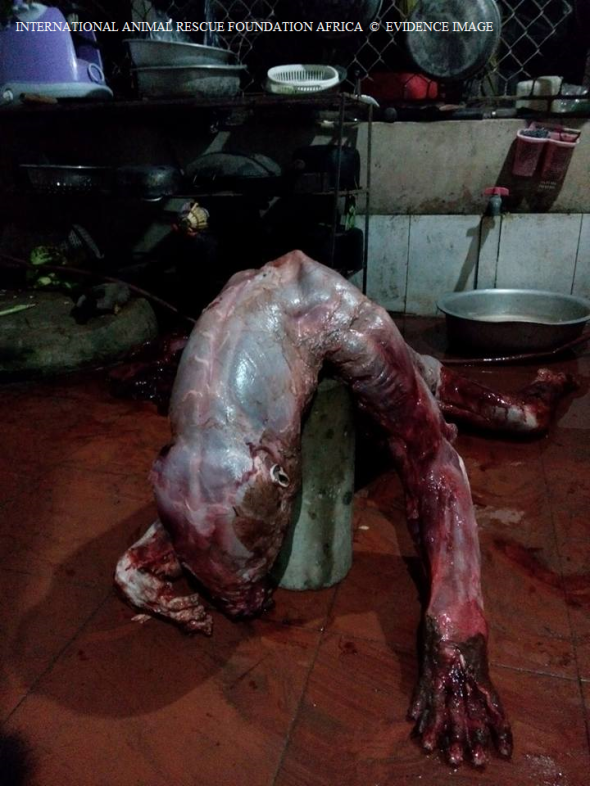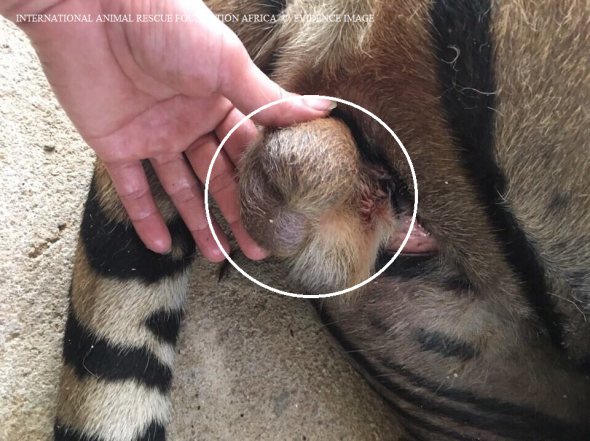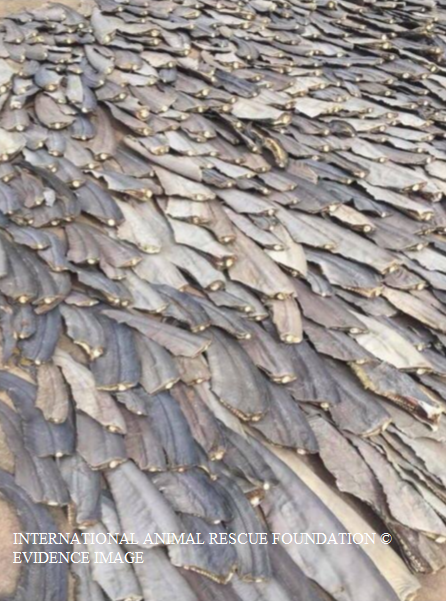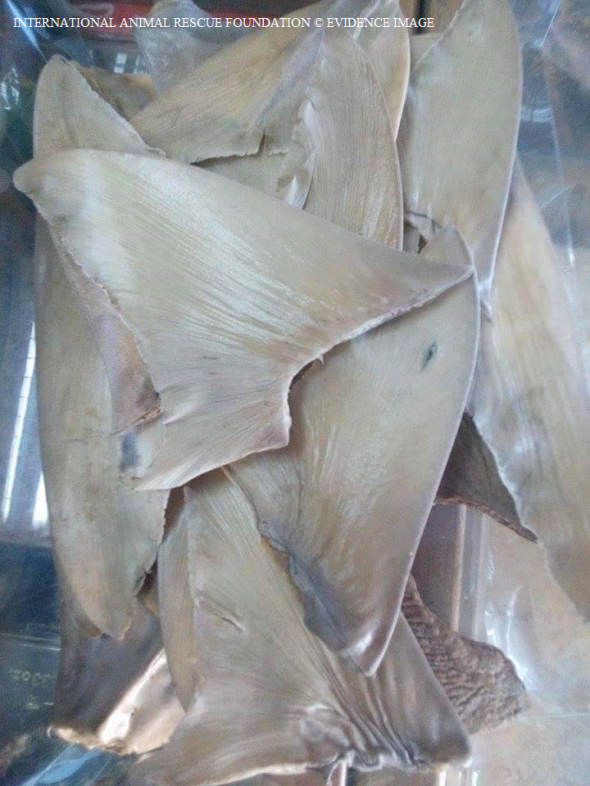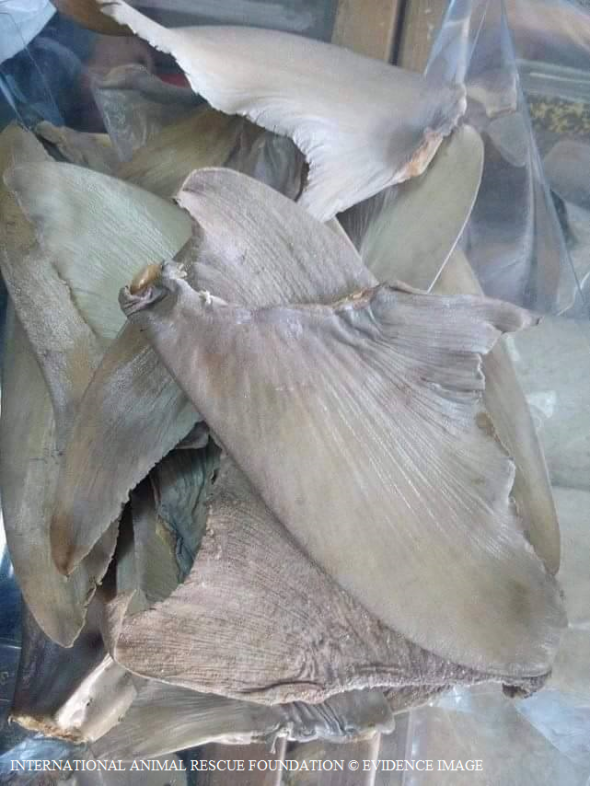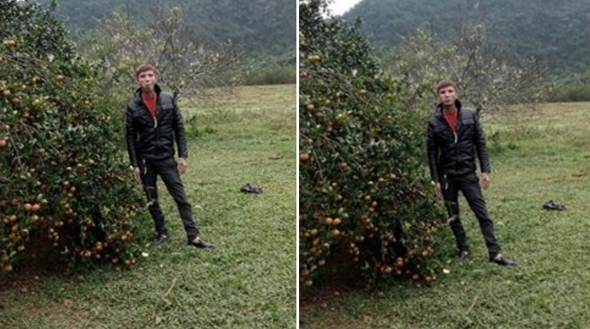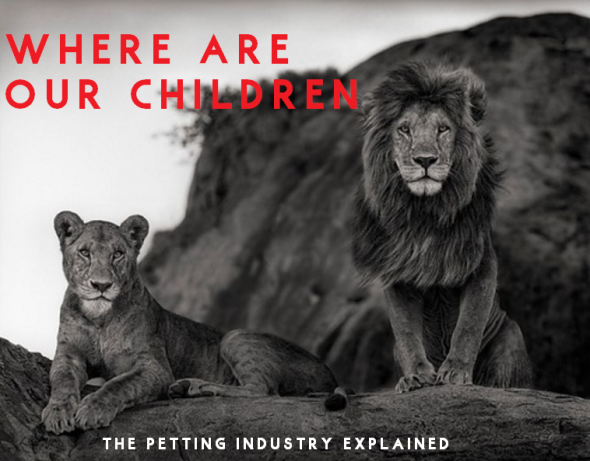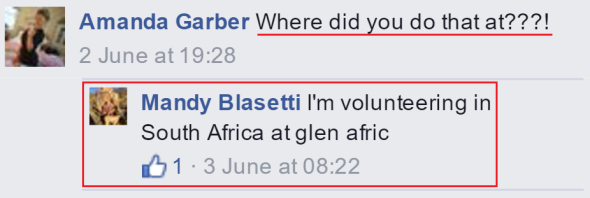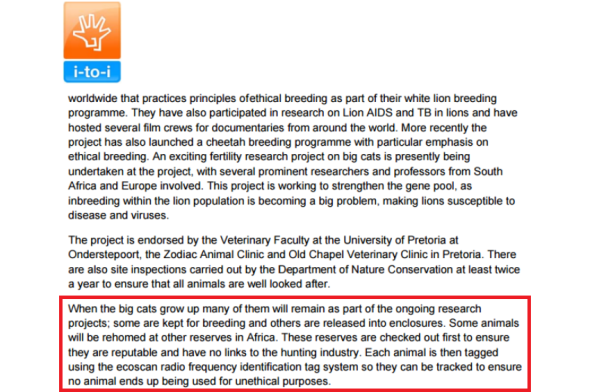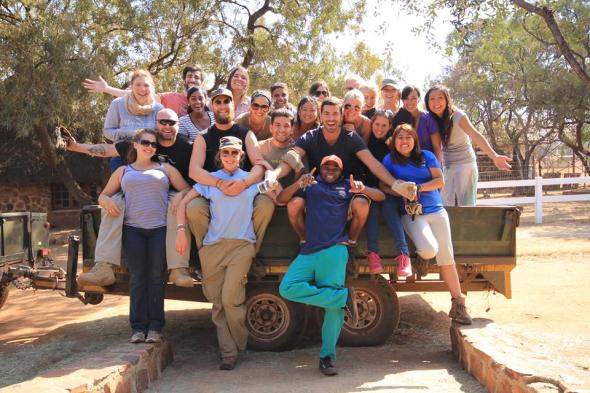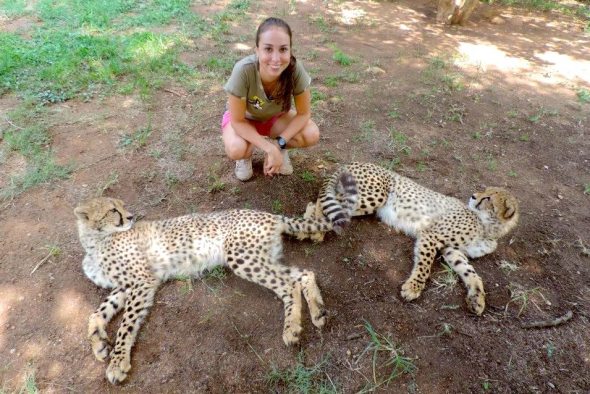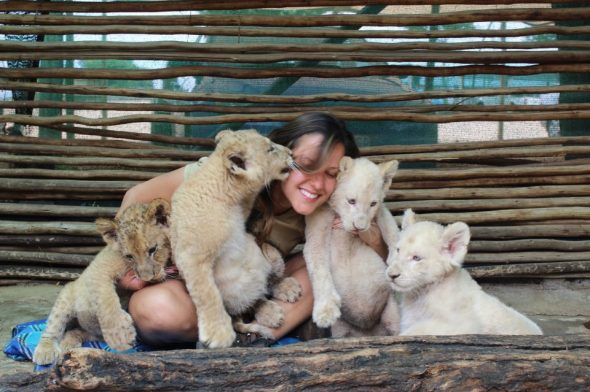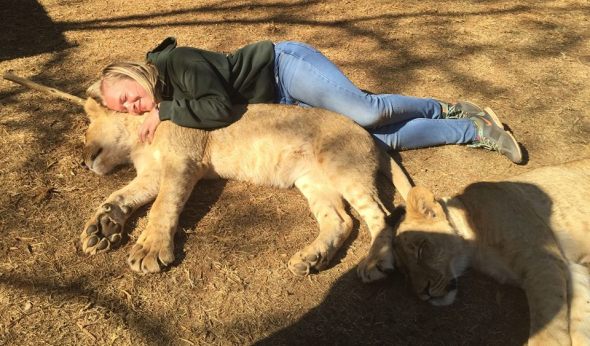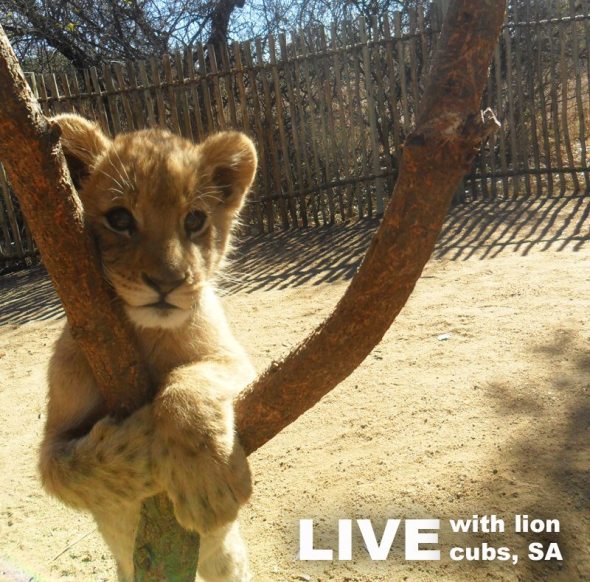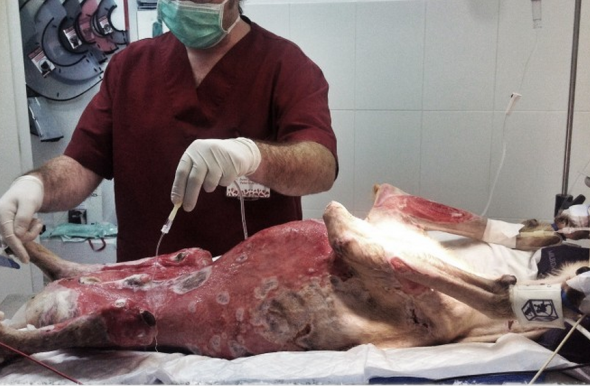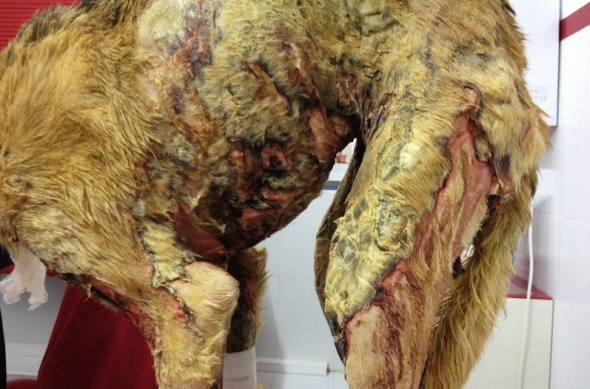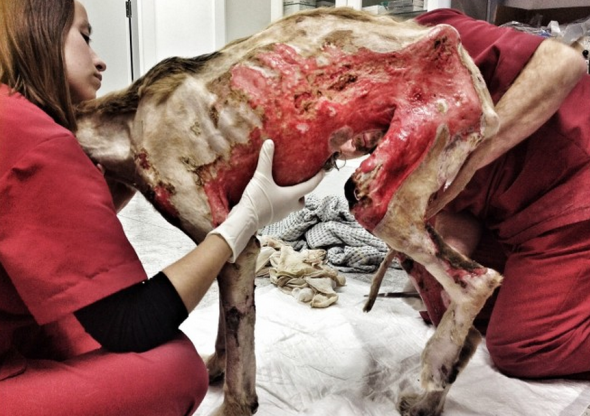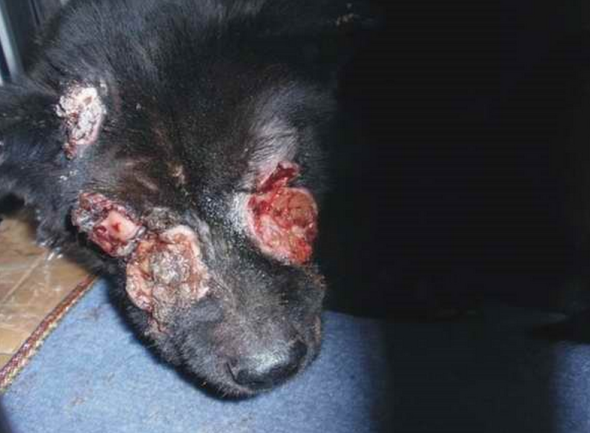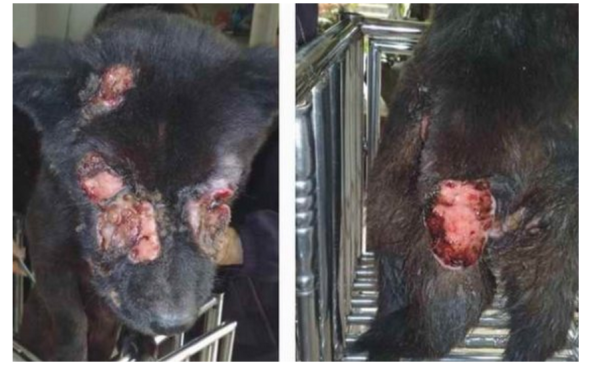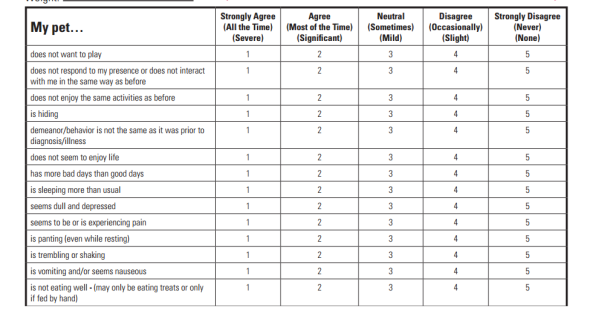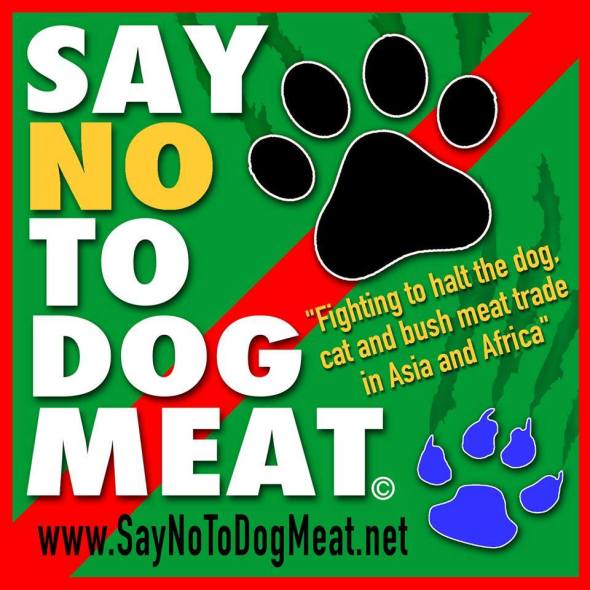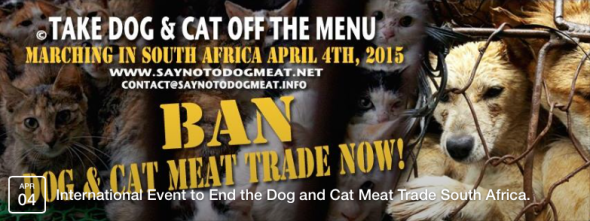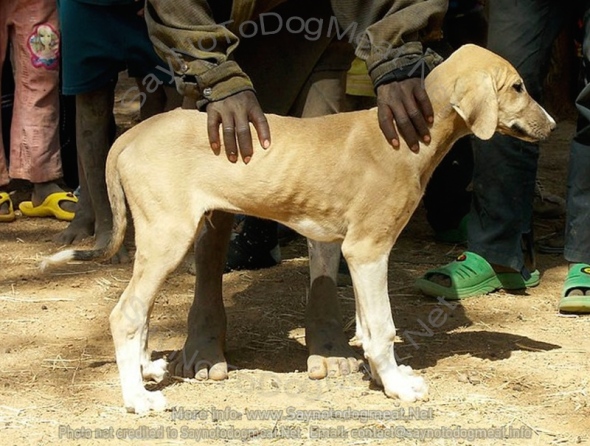FACEBOOK: IVORY TRADE OFF THE SCALE | VIET NAM | PART I
FACEBOOK | IVORY TRADE IN VIET NAM
Written by Dr Jose C. Depre (Chief Environmental Officer).
By the time it takes me to finish this document an estimated 20-50 elephants will have been slaughtered. Once you turn your head and continue to do nothing, come tomorrow 100 elephants would have been killed for their ivory to supply the South East Asian black market. Back in January 2015 I launched yet another online and ground intelligence gathering operation relating to the illegal wildlife trade; We are focusing on China, Viet Nam, Laos, and Thailand of which the team, a twenty four strong experienced male and female unit originate from all backgrounds. Today I’m focusing more on the online trade which has now increased to worrying new levels.
Since January 2015 when [Operation Stop It] was launched Environmental Crimes Officers have found what we believe is a new trend of ivory trade in operation on the United States platform known as Facebook. External Affairs Officers became aware of the huge trade when investigating a Vietnamese national identified as Mr Trang from June 2015 to December 2015. Unfortunately since providing law enforcement agencies with masses of evidence just on this one trader; very little in the way of arrests and/or confiscations has been witnessed.
The ban on international trade in ivory was introduced in 1989 by CITES (Convention on International Trade in Endangered Species of Wild Fauna and Flora) after years of unprecedented poaching. In the 1980’s, an estimated 100,000 elephants were being killed per year and up to 80% of herds were lost in some regions. However despite the ivory trade ban in place, very little in the way of illegal trade reduction is being witnessed within Viet Nam, China, Laos, and Thailand.
Viet Nam is one country of interest that we’ve noted as hosting “unusually large amounts of (raw ivory tusks), most of which seem to be originating from impounded stocks, with other tusks clearly removed from ivory pyres”. While we are aware a large majority of ivory tusks are originating from Africa, there is also a significantly large amount also originating from Asia. Asian ivory tusks are more favored for carving over that of African elephant tusks.
Image: Two tusks located for sale on Facebook 16.05.16 from | impounded or stolen from pyres?
The two elephant ivory tusks (pictured above) were located on Facebook for sale yesterday which we suspect have originated from a recent or past ivory burn. Normally ivory tusks are white, or a dusty creamy color with some dark tinges to them; embers can clearly be seen on the left hand tusk with visible white dehydration and salt marks too.
Image: Ivory jewelry smuggled from Africa into South East Asia now on sale on Facebook.
While the online trade is no big secret, the fact is Facebook hosts no terms and conditions in place that bans such illegal trade; the Facebook platform has no systems in place to recognize such imagery (I.e raw tusks) using BOTS that can then report back to a third party Policing team. Finally IARFA Environmental Crimes Officers have found Facebook is being exploited by many South East Asian citizens primarily from Viet Nam, and Thailand peddling ivory from Asia and Africa.
Image: Ivory trader weighs up tusks he is trading online via pseudo Facebook account shops.
The image above clearly demonstrates just has serious the ivory trade has become online and on the Facebook social media platform. Traders will commonly show their products to prove their wealth (I.e as a status symbol), or to prove/demonstrate the legitimacy of their products compared to other traders, that may be selling counterfeit ivory. The trader who we can only be name as Mr Phong then demonstrates just how much he will be making come the end of the month. The total amount of ivory Mr Phong is selling on Facebook (pictured above and below) will fetch him around $15,000-$20,000USD depending on how the ivory is sold and/or manufactured.
Image: My Phong weighs up this illegal haul of ivory, fetching him some $15,000-$20,000USD
Despite international and domestic trade bans nothing is actually working, furthermore we do hold concerning evidence that shows without a doubt many tusks are being removed from compounds in Asia and Africa then sold onto the very people that police took the ivory from. Police have been witnessed trading confiscated ivory at high prices back into the hands of smugglers knowing too well they are going to make a good wage due to the high demand for ivory tusk products.
Back in 1992 Viet Nam officially outlawed the ivory trade, unfortunately since the ban was implemented any ivory that was purchased before “Viet Nam’s ivory ban” can still be sold legally so as long as the tusks host the correct certification; Fortunately CITES did rule that “re-worked ivory or any tusks/ivory products that were purchased before or after the 1992 Viet Nam ivory ban that are then re-worked, would then be classed as new ivory (non-exempt) thus making that product that was legal - now illegal.
Meanwhile back in 1975 international trade in “Asian elephant ivory” was also banned. There has been quite a few tusks examined by experts and third party experts located on the United States Facebook platform as originating from Asian elephants. Asian elephant tusks are much smaller than your average African bush elephant tusks. Come the 1980’s it was then stated no fewer than 50,000 Asian elephants existed which are now listed on CITES Appendix One and known to [endangered].
One out of every six Hanoi citizens are dealing ivory on the United States Facebook platform. Most of this ivory is as explained originating from Africa and Asia, with clear and obvious signs of trafficking, and thefts from impounded ivory and ivory pyres.
Image: One of many thousands of online ivory trading Facebook shops in Viet Nam.
The image above was picked up from one of many thousands of Viet Nam ivory traders. Traders establish a sophisticated network of “pseudo Facebook accounts”. These accounts are rarely in the real name of the trader. Traces of some accounts via the IARF Environmental Cyber Crimes Unit have shown ivory traders using Virtual Proxy Networks [VPNs] to conceal their Internet Protocol Address.
Furthermore when dealing over the phone traders normally use cheap (non-smart throw away phones) so that should enforcement agencies locate them, tracing the traders exact whereabouts, and who they are selling ivory onto is almost impossible. Its not uncommon to witness traders with a number of cell phones. One phone (the throw away one) will be used for trade and can easily be disposed of with all evidence destroyed containing names and numbers of ivory dealers and buyers. Meanwhile smugglers, traders and carvers also host a smart phone for normal everyday conversations and general surfing the web or interacting with friends and family on Facebook, Twitter or Weibo.
Back in March of 2016 International Animal Rescue Foundation’s- Environmental Crimes Officers located three Viet Nam ivory trading carving factories all advertised on the United States Facebook platform. Moreover it wasn’t just carvers and ivory advertised for sale; we also located evidence of ivory carving tools, measuring and weighing instruments and “DIY ivory carving instructions for beginners”. The carving instruments below were found in one Hanoi carving workshop (on the Facebook social media platform), meanwhile underneath the bottom image is proof of more raw ivory tusk carving.
Image: Ivory carving tools, Viet Nam, Hanoi used to intricately carve ivory.
Image: In the same carving room more raw ivory tusks were located readied for carving on Facebook.
Environmental Crime Officers have located a staggering 80,000 “ivory and wildlife trade shops” all in operation on the United States Facebook platform, yet little if anything is being done to stop this trade or even restrict traders activities. When submitting this evidence with films, images and Facebook accounts and the current laws on ivory trade to Facebook’s Security Head, Alex Stamos we we’re unfortunately ignored.
Yet Facebook’s moderation team are quite willing to remove accounts that have violated their “bullying, harassment or terrorism polices” (all of which are crimes), sadly the social media platform is unwilling to remove highly active wildlife traders breaking domestic and international wildlife laws that are making a ton daily.
On the 3rd March 2016 the BBC reported “Facebook wildlife trade prompts fears among environmentalists”. Traffic - an Environmental Crimes Investigation Organisation located hundreds of online profiles selling endangered and threatened animal species. Facebook stated “It will not hesitate in removing content that is promoting such trade”. Yet when we contacted Facebook submitting more than enough evidence relating to ivory, rhino horn, tiger and pangolin trade all accounts are still in operation.
Facebook did quote though “They are developing practical solutions to combat trade“, unfortunately these solution’s seem to aimed only at “animals rather than animal parts”. For the time being Facebook has no terms or polices in place that would remove illegal wildlife traders dabbling in rhino horn, tiger parts, pangolins, or [non-exempt] ivory. And with some 1.32+ billion Facebook users, Facebook will we believe now have a large job on their hands in combating such trade as from 2014 trade on the Facebook platform has exploded.
“Investigators are concerned that the use of social media and smartphones means that anyone interested in selling wildlife can rapidly access huge numbers of potential buyers”….
Image: More ivory Facebook shops churning out thousands of euro in ivory, all from raw re-worked tusks.
While Facebook has stated they are developing new measures and applications to combat trade, these new measures and whatever applications will be made to combat trade are all too late. Facebook is probably one of very few platforms where you can actually create “private groups”, where only those that are interested in such trade can enter and interact with other users.
Moreover Facebook provides you secrecy in relation to pages; I.e: Traders can censor which countries they don’t want to view their pages then continue trading whatever they like. In relation to pages there are ways and means around that censorship, which will not be published hereto.
One of the largest items we are seeing traded on Facebook is that of ivory bangles, ivory necklaces, ivory wrist bands, ivory chopsticks, ivory pens, ivory encrusted watches, ivory sex toys and ivory cigarette holders (in the thousands). Overseas tourists that visit Viet Nam are often caught or witnessed buying these small cheap products, and the longer they (the tourist) purchase from ivory carvers and traders, the longer demand will continue to increase and fan out. That is one area of the trade we need all be focusing on (demand) to nip in the bud sooner rather than later.
Ground Sales Survey of Ivory:
Back in 2014, a total of 1614 ground outlets were surveyed in 21 localities throughout Viet Nam. Eighty-five of these outlets (5%) were found to have a total of 2300 ivory items for sale. Buon Me Thuat city was found to have the highest percentage of shops (50%) offering ivory. However since CITES has placed more pressure onto Viet Nam to clamp down on ivory and other wildlife trade, these shops are slowly reducing trade, although we do highly suspect traders are now operating more freely on line from which policing this area of the trade is more difficult.
While it was stated that many shops on the ground had increased somewhat, law enforcement in Viet Nam has allegedly made it more difficult for traders to openly trade ivory that has no exemption. Its is for this reason we now believe Facebook is being used more and more to trade ivory products, and as one can see in the images above - we are talking massive amounts of ivory pieces and products, 90% of which hosts no certification, furthermore the vast majority of traders we’ve located are carving products from “smuggled ivory”.
It is presumed that the currency in which the price is listed or quoted in many ivory surveys may indicate the nationality of the most common buyers in that area. Both observations and questions to particular sellers substantiate the fact that ivory is sold to both “foreign tourists and Vietnamese nationals”. For example in HCMC, the majority of the ivory buyers in the two markets are assumed to be tourists from China as prices were quoted in Chinese Yuan.
Video: Bryan Christy examines the illicit ivory trade. Interesting we have also have located a number of “counterfeit tusks that are being traded online and on the ground”. Please stay tuned for article two that will delve a little deeper into both the counterfeit rhino horn, ivory and tiger part trade.
The HCMC silver and gold shops that also offered ivory (particularly the smaller, religious pendants and figurines) appear to be targeting Vietnamese buyers with prices advertised in VND. In Dak Lak and Ha Tien, the majority of the ivory buyers are assumed to be Vietnamese tourists as prices there were quoted in VND. In Ha Noi, prices were mostly given in USD when enquiries were made, which may indicate that the buyers of ivory pieces are likely to be international tourists.
While the majority of ivory is presumed to be aimed at mostly Asian tourists - there is no real hard hitting evidence that this is in deed true. For example if you was British you’re hardly going to purchase an ivory bangle in GBP, so exchanging that currency into Vietnamese dollars then places that ivory for sale (at just about everyone and anyone) with the correct currency.
It may be somewhat of a shock but the UK is the third biggest source of intercepted illegal ivory entering the United States of America (US), which has been singled out by CITES (the Convention on International Trade in Endangered Species of Wild Fauna and Flora) as a ‘problem country’ with a large domestic ivory trade likely to provoke illegal elephant poaching if not regulated and brought under control. London’s Portobello Road – the biggest antiques market in the world – has been identified as the single major source of this illegal ivory.
Furthermore while antique ivory trade is “problematic” so too is non-antique and the longer these trades persist, more and more elephants will be slaughtered for their tusks. We are growing very concerned now at the large number of ivory dealers operating on Facebook. There is clear evidence that much of this ivory is originating from both Africa and Asia, furthermore as explained - the large number of “raw tusks we are locating clearly shows that security is indeed more than questionable at ports, and pounds that hold confiscated ivory.
Image: Raw African ivory tusks, cut and sold onto Viet Nam carvers, on sale on Facebook.
Back in 2015 (just before Christmas) External Affairs Environmental Crimes Officers located an “unusual amount of raw tusks from Africa” that we suspect had made their way into Viet Nam from China. IARFEIA Officers located on the Facebook platform some 21 whole raw and non-certified elephant tusks, some of them even had blood around the bases indicating these were freshly poached ivory tusks; all of which is in violation of both domestic and international ivory trade laws.
Image: Vietnamese ivory carver aged 19 from Hanoi, Viet Nam.
The image above doesn’t really show much does it? although the other images below shows exactly what this talented young man has been creating from raw African and Asian elephant tusks (and is still creating today with his freinds - all college students). Ivory traders and dealers make no attempt at concealing their identity anymore neither. However there still remains a hardcore number of dealers that will continue to conceal their faces, names, and never post images onto Facebook that depicts them holding raw non-exempt ivory. This belief that ivory traders, peddlers, and smugglers were all but old, is now a myth. Today we’re witnessing traders and carvers as young as 16 years old, taking over from their parents thus fueling the ivory trade evermore on Facebook.
Image: Young trader named as Mr Manh exhibits his newly carved ivory pieces on Facebook.
Image:Mr Manh proudly shows one of many hundreds of ivory pens that are in great demand.
Image: Ivory pen with top off, Viet Nam, Hanoi.
Image: Ivory trader identified as Mr Trang proudly displays carved ivory on Facebook for sale.
Image: More freshly carved ivory cartridge pens on sale in Hanoi, via Facebook.
From 2015 (to date) IARFA Environmental Cyber Crimes Officers and the ground team External Affairs Environmental Crimes Officers have found that Viet Nam is “suspected” of peddling more ivory than China and Thailand. Cyber Crimes Officers are now locating every week on average of 2-3 “raw tusk dealers” operating on Facebook. Meanwhile the database of 80,000 ivory and wildlife trade dealers all operating on Facebook continues to increase by the week.
The whole purpose of this article is to wake people up, and open their eyes. We have a major problem on Facebook, and Alex Stamos Facebook Head Security Officer doesn’t seem to be taking much notice of this ongoing and rather concerning problem relating to just the ivory trade alone. We’ve not got much time left, there is an estimated 50,000 Asian elephants in Asia, and “known - some 600,000 African elephants remaining on the continent of Africa with a probable 1.2 million known but (uncounted).
Facebook has become a hotbed for the lucrative and illicit most illegal wildlife trade. And for the time being not a single thing is being done to control this trade. Please sign the petition hereto: http://www.thepetitionsite.com/645/521/701/facebook-remove-illegal-pet-and-wildlife-traders-from-your-server/
“The Extinction Clock is Ticking”
Thank you for reading.
Chief Environmental Officer, Dr Jose C. Depre.
Environmental Crimes Department.
Parenting & Hunting | Exposing Children to Violence II
TEACH THEM YOUNG | POOR PARENTING
I have tried in vain to not post images about trophy hunting or any hunting, simply because it provokes so much rage, anger, and hatred. However I have yet again violated my own self discipline, because I am angered to the core of witnessing selfish and arrogant parents displaying poor parenting, not forgetting the obvious, teaching their young children during the developmental brain stage, that killing animals is pretty much okay, because mummy and daddy does it.
Violence is violence, and abuse is abuse at the end of the day, killing an animal and allowing your child to watch such horror and gore, or act out is no different to that of placing your child in-front of a (16, 17 18 or 21) age restricted movie, adult film or violent video game. While films and video games are though mostly faked, hunting isn’t. Furthermore while the human brain develops from the ages of 1-21, any such displays of violence, abuse, neglect or harm can heavily imprint onto the child within this developing process. Which in turn can change a child’s thought process and in many cases - corrupt a child’s brain, for how long though depends on the severity of violence exposed.
Violence is ubiquitous and often glorified, and within today’s hunting theater violence is glorified as an acceptable behavior. Hunters may and do argue this, however they must remember that at the end of the day, violence is violence. Whether its killing an animal with a shot gun, cross bow, or breaking a rabbits neck, these acts are still ‘violent’, and they are “acted out”. Then of course comes the ‘glorification’, whereas back in the early 1950’s and 1970’s such acts like the one pictured above wouldn’t be glorified.
Watching a suspense movie, playing a violent video game can often be seen as a form of relaxation, exactly like recreational hunting. Surely there is nothing wrong with this? Evidence is continuing to mount, that these so called “relaxing thriller and suspense movies, action packed and violent video games, down to hunting be it for food or sport” is indeed having a profound and ‘non-relaxing effect’ onto the human brain.
Like I have explained, when such suspense, violence or action packed sport are relayed and projected onto minors within the “brain developmental stage”, such behavior or actions can have a disastrous effect onto the human brain and our way of thinking. Dress it up as much as you want, call it what you like, abuse is abuse, violence is violence. They are both linked.
A study by the Indiana University School of Medicine examined young men and violent media exposure. There were visible alterations in MRI brain scans after only one week of playing a violent video game. In particular, there was a significant decrease in the activation of prefrontal portions of the brain and a greater activation of the amygdala. Now some hunters may disagree here, however lets go over this one sentence again. “Examined young men and violent media exposure”. Violent video exposure or any exposure from anything that is deemed as violent can in both men and women have a profound effect onto the main thought and thinking process. This has also been linked to depression, especially those in countries with little sunlight and poor weather.
From what I am aware, the study conducted by the Indiana University School of Medicine is one of the first such studies of its kind. So its going to be pretty interesting to examine the results when further studies are rolled out worldwide, and if these conclusive reports will eventually prompt governments, media producers, and hunting outfitters to eventually impose restrictions relating to exposing children and minors to violence. The video game above is a prime example of “acting out violence”.
The young viewer states they love animals and would never harm them, yet uses language such as “come here you little bitch, we fucked up, we’ll get our revenge, come on get that mother fucker”. Again some hunters may disagree here, and believe this is nothing more than silly childish banter. The fact is, the video gamer agrees that she loves animals, yet is prepared to kill them within a simulated game. Brain study evidence also proves that prolonged exposure to such violent video games can increase depression, self harm, lower ones thinking process, concentration and see the individual committing a violent act after prolonged gaming. There is also evidence that points to video gamer’s wanting to “do the real thing”. I.e Go out and purchase a gun, and enact the same behavior from that game within real life.
But the findings are intriguing and beg the question: Does an activation of the limbic system and an inhibition of the prefrontal cortex predispose to violent behavior? This is a relatively easy proposition to test and I suspect we will see more studies soon. Meanwhile the University of Alabama conducted an identical study, and that study also showed up exactly the same results from the study conducted in Indiana.
Results from the main Alabama and Indiana study showed violent and aggressive traits didn’t occur soon after watching “violent and aggressive video games”. However violent and aggressive traits did occur some months, to a year after being playing such action packed games. I myself have always tried to explain this concern to hunters when they debate and argue with me. They believe that one violent act doesn’t lead directly to another, and that’s true, which both the studies pointed out.
However, unfortunately, its the “prolonged over and over again exposure to such aggression and violence that eventually does increase violent and abusive tendencies to unfold”. The neurological examination team concluded “The study concludes with a caution for parents that immature and/or aggressive children should not have access to violent films”. Again some hunting families may argue here, and debate profusely that hunting is not under any circumstances identical to that of playing a violent video again.
To a degree the average family hunter are correct, its not identical, however there are many identical features within such games that are played out in hunting I.e: Killing, Abuse, Death, Violence, Murder, Bad Language, Glory and Torture. So theoretically speaking, hunting and exposing ones child to such hunting practices, or allowing a child to hunt, (is a form of violence), and can eventually “over time”, see aggressive and abusive traits played out, all of which is no different to playing an action packed violent video game, or watching continuously many violent, abusive and suspense movies.
The Macquarie University Children and Families Research Center found that children who watch violent movies are more likely to view the world as an unsympathetic, malicious and scary place and that this stimulates aggression. It also suggests children are more likely to exhibit combative behavior while becoming desensitized to violence. Reportedly, the MRI brain scans of children who have viewed film or television violence had a similar look when compared to those who have violently acted out. So we know that children who “act out” within video games in the same manner as “hunting” are more than likely to “act out violence”, than those who simply watch an action packed aggression filled movie.
It is without a doubt that all studies that are being conducted and have been concluded thus far by neurologists, and psychiatrists have shown “children who act out within violent games” all show at a later date brain changes, aggressive behavior, and poor decision making”. Unfortunately there will be deniers in relation to this article, reports and follow-ups. Just like there were deniers that stated five decades ago, smoking doesn’t cause cancer, drinking doesn’t cause liver disease Etc.
Regardless of whether its a video game, watching television or participating down to exposing hunting behavior to minors. When violence is portrayed, over a prolonged period of time. At some point there will be children who’s brains cannot handle the mass degree of violence, that then, unfortunately go out and commit a violent act. The Virginia Tech Research Division stated; “Studies showed students several non-violent movies, followed by super-violent movies. Results indicated violent films can increase hostile behavior”.
Article 1: http://www.research.vt.edu/resmag/sciencecol/media_violence.html
Article 2: http://www.ncbi.nlm.nih.gov/pmc/articles/PMC4227415/
Taking ones child out and “playing or acting out” a violent sport, shooting, cross bow, or just snaring, is no different to sitting your child down in front of a video game that is violent, thus allowing ones child to “act out a violent act”. Shooting an animal is no different to shooting a human. The sooner hunters and governments around the globe understand this, the better. Then we may eventually see a decrease in violent youth behavior.
Dr Jose C. Depre - PhD. MEnvSc. BSc(Hons) Botany, PhD(NeuroSci) D.V.M. Environmental & Human Science
Environmental and Botanical Scientist.
VINPEARL LAUNCHES SMEAR CAMPAIGN | NAUGHTY.
WHERE DID YOU PURCHASE YOUR ANIMALS FROM AGAIN?
The Vinpearl Group fronted by Viet Nam’s most richest man has recently launched a very humorous smear campaign, AGAINST I.A.R.F. Now we don’t normally play smear, or even dirty, but if we’re going to play smear lets pull the big clangers out of the hat here.
WHO FROM THE VINPEARL GROUP PURCHASED HUNTING ANIMALS?
We recently ran a trace on where Vinpearl recently purchased some 330+ animals from in South Africa. No, it wasn’t from Harrods, although that wouldn’t surprise us to be honest. The so called ‘professional group’ fronted by some rather illiterate journalists seems to be forgetting that whilst their BIG BOSS MAN may have money, we have experience and some 8.9 million supporters to share share that experience with. Opps.
SHINGALANA LION & RHINO GAME RESERVE
Who in their right mind purchases animals from hunters, knowing that the money given to them hunters will purchase more animals to kill? BACK in DECEMBER 2015 - The Vinpearl Group purchased lions, tigers, kudu, monkeys, and zebra from SHINGALANA LION & RHINO GAME RESERVE, now did the Vinpearl Group inform their ‘paid journalists to look that one up’? Moreover why are paid ‘Vinpearl journalists supporting killers that support others killers’?
Image: Thanh Chu readying animals for Vinpearl transportation.
Now what does Thanh Chu (pictured above) and Ben Tran (pictured below), have in common with the hunting lodge that supplied countless diseased animals to the Vinpearl Group? Lets take a look.
Image: Ben Tran overseeing the shipment of animals from South Africa to Vinpearl.
Ben Tran and Mme Chị Van Anh Le (both of which are NOW hiding their data online quicker than you can say boo to a ghost), were the two main players that done dealings with the ‘hunting lodge above’. Not very professional is it? And before Ben Tran or even his sidekick denies knowing one another, or even the hunter they purchased animals off with the help of Viet Nam’s most richest man, think again!
Image: Van Thanh Chu who works for Frikkie Jacobs
Now who is Frikkie Jacobs dare we ask? Unfortunately for the Vinpearl Group, Frikkie Jacobs is one of many sadistic and quite narcissistic hunters that the so called ‘Viet Nam’s prominent richest man purchased animals from. The money that went into the sales of them animals, will now go into killing more animals as can be seen in the image above (top screen). Not very gentleman like now is it? Sigh.
Image: SHINGALANA LION & RHINO GAME RESERVE
Viet Nam’s richest man funds hunters.
Now okay. Viet Nam’s most richest man probably didn’t directly place money into the pockets of hunters and demanded they hunted more animals. What Mr Pham Nhat Vuong did do though is provide money to Mr Tran, Mme Chị Van Anh Le, and Mr Chu Dang Khoa to purchase animals from SHINGALANA LION & RHINO GAME RESERVE. That money has sadly gone directly into the pockets of hunters, that will breed more animals, hunt more animals and continue to cycle of trophy hunting.
Now be quick. All you Vinpearl paid journalists may want to check our claims up, they’re fast vanishing, and its likely that more and more data will vanish offline.
Thankfully we hold reams and reams of fast soon to be vanishing data.
When you try and smear us with nonsense, be careful, because we’d already have looked you up, spat you out, and moved on.
Have a nice day.
Anti Vinpearl Journalist.
Illegal Wildlife Trade | Investigative Report | Viet Nam & Thailand.
ILLEGAL WILDLIFE TRADE IS BOOMING
WARNING - THE FOLLOWING INVESTIGATIVE REPORT IS GRAPHIC
Investigative report written by: Dr Jose C. Depre.
International Animal Rescue Foundation Africa and her External Affairs Environmental Investigations Department commonly known as the (EAD), have for the past year been warning police agencies, and Interpol internationally and locally to tighten the grasp on the black market illegal wildlife traders, after a sudden spike was witnessed by us in trade emerging from Thailand and Vietnam (2013-2014)? IARFA’s External Affairs operations unit were somewhat suspicious as to why so many rhino and elephants were being poached, yet very little in the way of fresh animal parts I.e rhino horn and elephant tusk were being seen on the ground.
Back in 2014 the BBC reported that rhino horn and ivory in Viet Nam and China had heavily decreased (or was becoming more difficult to obtain), we disagree with the BBC’s 2014 documentary and have shown the evidence below to prove that trade is more than active in Viet Nam, with Thailand now the new rhino horn hub. We’re unsure as to what has caused this sudden increase of illegal trade and poaching in Africa and Asia, and the skyrocketing demand online, primarily on the United States social media platform identified as Facebook. What investigators located in the past year has shocked us, and has led to a multinational investigation spanning over 19 countries, resulting in IARFA’s biggest wildlife crimes investigation to date.
(NB: The following evidence depicted herein is of a graphic nature and viewer discretion is strictly advised).
A further concern was the sheer fact that rhino horn was becoming more difficult to locate on the streets of Viet Nam, which was also highlighted in the video below via the BBC (2014), yet rhinos are being slaughtered at some 5-7 a day on the African continent, primarily in South Africa. So we sent in our team of investigative officers to track down where we believed rhino horn and wildlife syndicates and traders were now in operation. The shocking evidence below proves what we believed all along. Thailand has become a hot bed for illegal rhino horn trade, and Facebook has yet again exploded with online illegal wildlife ‘profile shops’ and pet trade that criminals hide behind to peddle their trade on a grande scale.
Back in 2012 the External Affairs Department recruited a further twelve investigative volunteers due to worrying trade increases of mainly ivory, rhino horn and endangered tropical pets that were being sold at ground level, and on Facebook. Furthermore the (EAD) increased its online presence in relation to cyber crime projects run by Operation Trojan Horse founded in 2008 after it became apparent teenagers as young as 16 were illegally peddling animal parts and endangered tropical pets via their Facebook social media profiles.
While the (EAD) and her counterparts from the Operation Trojan Horse Online Surveillance Unit have been successful in locating and closing down illegal wildlife and pet traders (with arrests and seizures being made). Very little in the way of a decrease of demand and trade is being noted. Countless complaints to the United States Facebook platform with petition, hasn’t been successful either. Despite the fact illegal wildlife trade ranks as the worlds 4th largest illegal trade funding terrorism, narcotics, prostitution and child trafficking.
Over the past 365 days the External Affairs Department have been monitoring unusual peaks of the trade in rhino horn, ivory and tiger parts within Viet Nam, Thailand and Japan, with much online chatter from traders in Benin, Cameroon, South Africa and Namibia to Asian citizens peddling animal parts. Two individuals (pictured below) we’ve been wanting to catch up with now for over six months, after the duo skipped a meeting with two of our EAD officers in Thailand regarding the sale of rhino horn.
Its unsure if the two knew we were onto them, or they simply missed the meeting for unknown reasons. Either way and with a stroke of luck after data obtained from a bush meat trader in Cameroon we managed to catch up with our fiends again. This time the evidence we hold on them is so large it spans from Asia directly into Africa. From the 23rd December 2015 investigative officers from the EAD’s (Cyber Crime Unit) then moved into quickly obtain evidence to pass onto Interpol. From the 29th December 2015 (17:00hrs) we can now confirm the following evidence herein has prompted Interpol to now launch an ‘urgent investigation’ into serious wildlife crime spanning from Asia to Africa.
Had the meeting gone ahead back in June 2015 it would have led us ‘directly’ onto a more larger wildlife trading syndicate that we’ve been monitoring within Beijing, China since 2014, identified as Mr Ji Lu or Ken as he calls himself. Unfortunately the trail went dead, both the two young men and Mr Ji Lu vanished off the External Affairs radar. Then the EAD struck gold last week before Christmas after a random trace of a Cameroon bush meat poacher in Africa. We’ve long known that African bush meat poachers and traders communicate to Asian wildlife traders and syndicates either online in private chat forums, or via stolen cell phones. This time we had our men, more than enough evidence to launch a multinational investigation and further information that has led us onto newer more sophisticated traders.
“Thailand is the new hotbed for rhino horn trade”
However never did the EAD or ourselves believe we’d again come face to face with some of the most evil and sadistic animal parts traders we’ve ever encountered. If the images and evidence below is not enough to shock the Thai and Vietnamese Police into now acting, then we don’t know what is. The following evidence in image format below is shocking and may upset some of our readers.
However its no shock to us of which we have for the first time decided to show to over 7.8 million supporters exactly what we and other wildlife agencies are up against. Teenagers and young men and women from the ages of 16-20+ are trading anything from bear bile, real rhino horn, ivory, down to gorilla’s (all of which is strictly 100% illegal).
The two men above aged between 19-25 years of age we’re keen to catch up with again for their involvement in the brutal breeding and killing of innocent tigers for the bone wine trade. Furthermore the two individuals are also wanted for questioning for their involvement in the dealing and illegal possession of rhino horn and Elephant ivory. On conducting a random online trace the two men and possibly a female are believed to be using a pseudo Facebook profile that goes under the name of ‘White Tiger’ that has been set up as a female account. We believe we know whom the woman is, however as yet we haven’t 100% firm evidence to prove this is our woman from Japan.
(NB: Please note we cannot publish the identities of the two men and woman for legal reasons)
Its suspected that the woman’s name whom we believe is related to the two men above is Mme Phuong ***** whom possibly originates from Hanoi, Viet Nam, however we also believe that she goes under the name of Mme Chung. A further alias the female account uses on Facebook (not related to Mrs Chung) is identified as Cọp ******. The city that the two males and female accomplice frequents is identified as Phatthalung, Thailand. The home town of the Facebook account from which the female is ‘alleged to be residing within’ has been identified as Bang Kongra, Phatthalung, Thailand.
Furthermore a trace of the ‘accounts working address’ showed up as Bangkok ( กรุงเทพมหานคร ), which is a tourist company ferrying foreign and local tourists around Thailand. We have reason to believe that the female account possibly belongs to a Japanese woman that we have been following all over Australasia, who now runs an immigration agency on Facebook. However it must be noted that Mme Chung and Cop ***** are two different women. Confusing we know, we know though that both women and the men involved in this report are using 2-3 Facebook accounts and communicating in various chatter forums online!
The two men and one woman have for the past year been heavily dealing in rhino horn, ivory, and tigers that are brutally killed to produce an alleged medicinal wine (as seen above), rhino horn down to bear bile, narcotics (possibly heroin/hash (see image below)), and what appears to be counterfeit illegal cigarettes. The 1970/1990 and 2009 domestic and international rhino horn trade ban prohibits anyone from trading in rhino horn.
Meanwhile the 1989 ivory trade ban prohibits anyone from trading un-permitted ivory and ivory parts. Furthermore its a criminal offence (internationally and locally) to trade in anyone of the endangered species being that of pangolins and tigers. International Animal Rescue Foundation Asia successfully identified the many pangolin’s viewed for trade as the Manis culionensis or the (Philippine Pangolin). Hence why we had to move quickly to communicate all evidence to Interpol.
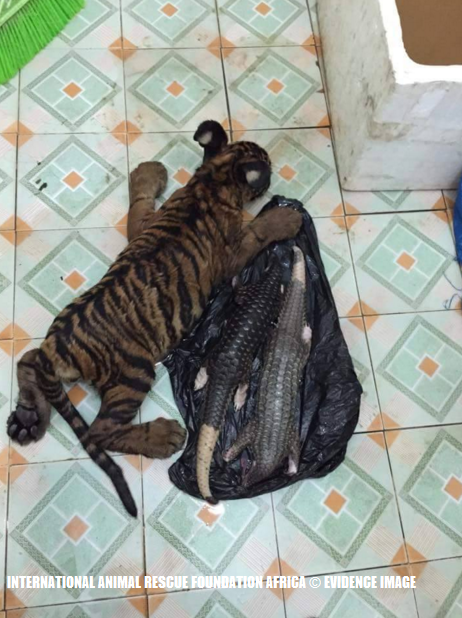
Illegal wildlife traders: Viet Nam & Thailand. Tiger cub was beaten over the head with Asian pangolins for the production of tiger and pangolin wine.
Back in June the External Affairs unit contacted the two men who’s names we’ve withheld in the hope to set up a deal to purchase rhino horn. Only one horn was available to purchase priced at $35,000 Vietnamese Dollars per/kilo. The horn had already been inspected by our Singapore counterpart that works closely within the trade circle.
The EAD officers then went ahead for the meeting of which as explained the two individuals didn’t turn up. Fortunately as explained we’ve managed to locate the two individuals again, this time though as you can see above and below, the two (possibly three individuals) have been rather busy since June 2015 (and way before they even cropped up on our radar). Some of the rhino horns can be viewed below along with ivory that is most certainly not permitted to be in the hands of these young men and women.
On locating further evidence that we required to instigate a multinational investigation we then again at 09:25am on the 23rd December 2015 and 29th December with a further communication on the 30th December 2015 communicated all (cyber evidence) and data to the Environmental Investigations Unit of Interpol via secure encryption. (Please note that are unable to provide all evidence onto this platform as it could/will impede on the investigation that is currently now ‘active’.
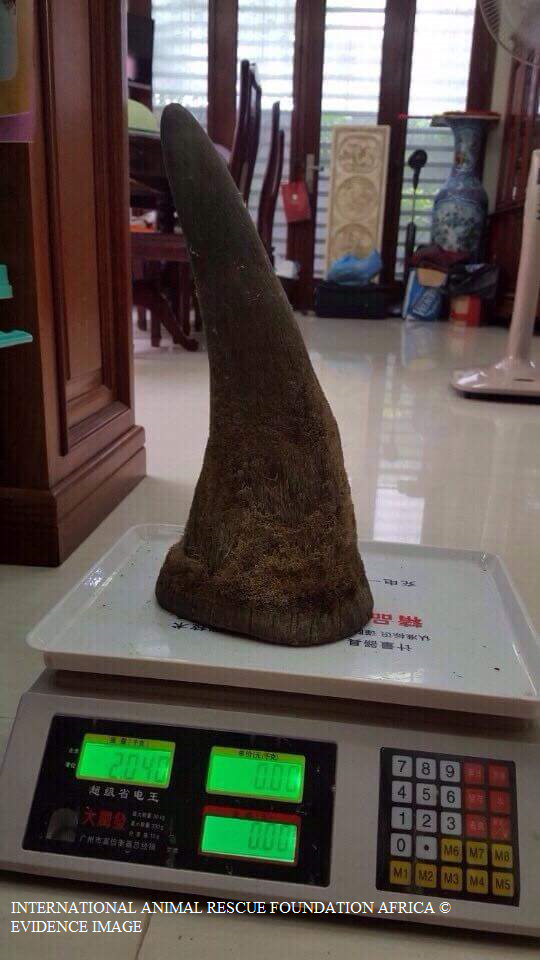
Trader weighs up a mature African rhino horn in back room. Total number of horns are worth in excess of 6 million euros.
Ivory trade was officially banned internationally back in 1989, however it hasn’t stopped these two rather sadistic and ruthless criminals from going about their trade bringing in millions of Vietnamese and Thailand dollars, most of which is traded on the US Facebook social media platform.
Furthermore it explains now where the vast majority of ivory and rhino horn is being traded. Viet Nam was virtually declared a no-rhino horn country by the BBC and the WWF back in 2014 as explained above. Unfortunately had the two investigations units bothered to look a little closer they’d have not only noticed our own concerns (with evidence being shown), but also many private online forums (including Facebook) booming in animal parts trade.
Below are numerous pieces of ivory all of which are not permitted. Investigate officers casually asked within the online chat forum if the ivory below was permitted, the [unnamed trader/peddler] was very forthcoming with his reply stating; “No, none of the ivory here is permitted”, meaning its 100% illegal to own/trade.
On immediately being made aware that the ivory was not permitted we knew instantly that these three individuals were not your average wildlife traders or syndicates. Furthermore on tracing the individuals Facebook profiles we were yet again (as explained) made aware of a female ivory trader that has been visiting Australia and Japan for unknown reasons while trading ivory online. Mrs Chung as we know her we’ve already informed the Australian Federal Police and TRAFFIC about.
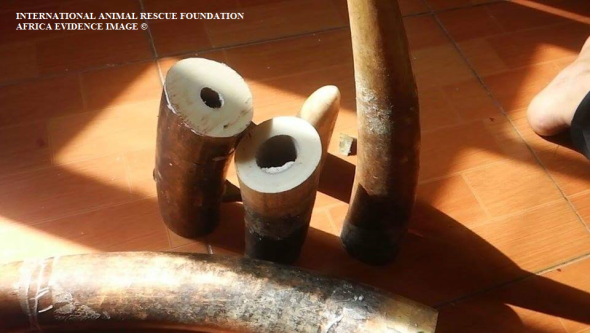
Female trader with male brags to investigative officer how ivory is easily obtainable from Benin via France.
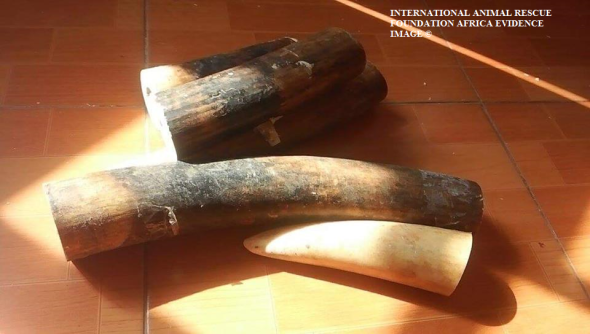
Trader informs investigate officer that ivory can be shipped into any county in the form of small firewood blocks.
The images above are just a small handful of evidence shots obtained from both the Vietnamese and Thai traders that had no worries whatsoever on displaying these items either to our investigative officers, or trading online via secure trading chatter rooms. These chatter room’s are mainly frequented by medicine men and women, and general traders of antique and non-permitted animal parts, all of which anyone can enter on Google using a simple VPN tool.
While ivory trade is not necessarily a big secret within Thailand, the sheer fact that younger people are able to obtain ivory and rhino horn in such mass quantities is extremely concerning. We also have reason to believe that some of the ivory is deriving from passages via Benin and possibly Cameroon on the continent of Africa. Our enquirers in relation to the African trail of ivory into Asia began with Mr Chan**** ***** who states he works for the Homme D’Affaire International which we believe is a made up organisation.
Chan**** *** runs a bush meat shop within Cameroon selling anything from pangolins to endangered turtles, masks and cars, and coincidentally his shop is also operational on Facebook. Had Mr Chan**** *** not bragged about ivory making its way from Benin into Vietnam we’d never have caught up again with our Asian fiends. Some of the images from Ch**** *** bush meat shop of horrors can be viewed below.
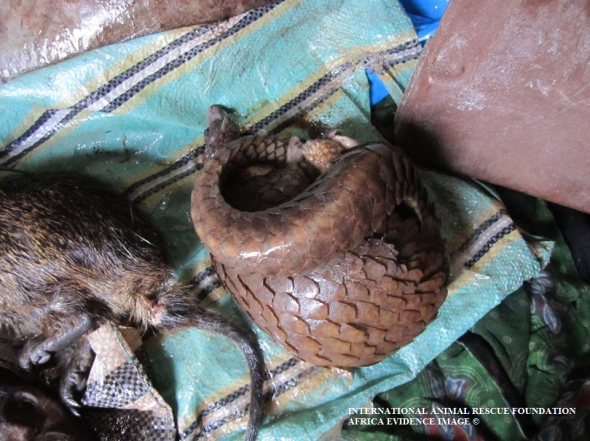
Investigators identified two species of pangolin. Both tie into the Asian and African wildlife traders.
E.A.D officers investigated the trade between the two African and Asiatic pangolins, above is that of an African pangolin which was the same species seen within the apartment of the Vietnamese citizen that offered our Singapore investigative officer rhino horn. So we’re 99% positive that all three Asian citizens have more than your normal ties to the African bush meat poacher whom we know is using a trade route from both Benin and Cameroon, onto Europe and into Asia. The African pangolin 1 of 3 identified in the apartment in Vietnam can be seen below.
African and Asian pangolins are fast becoming rare with the vast majority of Asiatic pangolins now nearing extinction. Pangolins are used within the Asian and African (TCM) Traditional Chinese Medicine trade. Furthermore the scales of the pangolins are used to make jewelry or coats. The meat of pangolins is considered a delicacy. Every year we loose more and more pangolins to poaching, and while the Asian pangolin continues to decrease in population size, the African pangolin will be placed more at risk furthermore.
Investigators were more shocked at the sheer fact that three young adults were able to obtain large quantities of illegal and legal wildlife products then freely trade them on the streets or upon their personal Facebook profile shop forums. The images below depicts large quantities of tiger teeth, bear paws, shark fin and what we believe to be tiger testicles.

Thai and Vietnam traders offered investigators bear paw, that is used to create a fake medicine soup.
The following images below are from tigers that our International Animal Rescue Foundation Asian unit have successfully identified as Sumatran tigers listed as critically endangered on the IUCN - International Union for the Conservation of Nature’s Red List.
Please note you may find some of the images below disturbing and emotionally upsetting.
Investigative officers were told that tigers are bred within small enclosures within the family home. From there the young cubs are then killed with the adults soon after. There body parts are either stored in a freezer whole, or decapitated. On mentioning tiger skins the EAD officers were informed that some of the tigers are skinned of which their pelts can fetch anything in the region of $5,000 to $10,000 USD. Needless to say we were mortified and shocked at the traders openness and complete disregard to the fact tigers are nearing extinction within the wild.
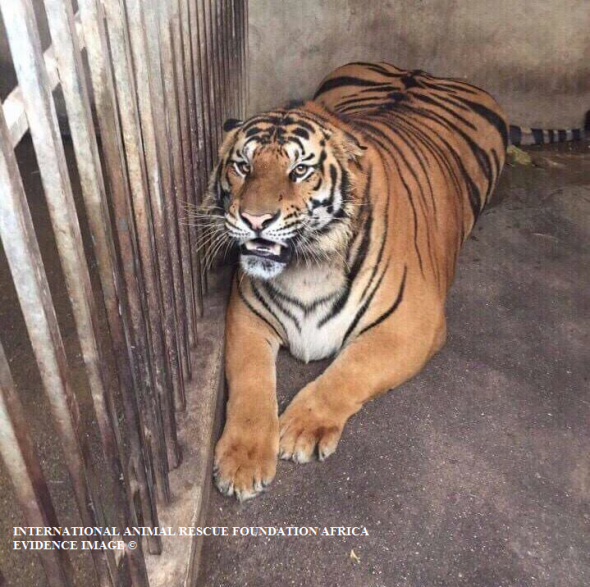
One of nine tigers that both the Thai and Vietnamese traders keep as pets. Sadly to later breed and kill for parts.
The tiger pictured above was being kept as a pet in a dark barred cage in Thailand, Bangkok. We personally believe that the three traders we’ve been monitoring since June 2015 have traded more than nine tigers (if not more). Based on the number of tiger teeth and claws we’ve estimated a probable 20-30 tigers have unfortunately met a rather gruesome and barbaric death, the sheer number of skulls, pelts, teeth, claws and tiger male testicles shows these traders are more than professional. The following images below may be upsetting to some viewers.
Despite the best attempts of law enforcement around the globe, CITES and national NGO’s pushing for stronger laws internationally and locally very little in demand and trade is being seen relating to tigers. A six month investigation of illicit wildlife trade has shown to us that trade is becoming more widespread, younger people are more involved rather than the elder generation. Regardless of education and awareness in schools the E.A.D are now picking up on average a total of 3-4 teenage dealers weekly. Many of them have ties to African bush meat traders too.
As previously explained Asiatic pangolins are nearing extinction, yet despite the amount of seizures being made, little in the way of a decrease in trade is being witnessed. Furthermore as Asian pangolin populations decreases, African pangolins will be poached to continue the trade and demand of pangolin meat, scales and medicine. None of which has any medicinal value whatsoever.
The images below were what prompted E.A.D investigative officers to then look further afield, taking the team from Thailand and Viet Nam to Africa.
From 2010 the External Affairs Department have noticed a staggering increase of tiger teeth and claws on sale via the Social Media platform identified as Facebook. There are two different types of trade. 1. Counterfeit trade which is primarily wooden carved tiger teeth and claws and 2. Real tiger teeth and claws. Like all of the evidence above and below obtained by the EAD’s Operation Trojan Horse officers, every part of the tiger is used for illegal trade.
Tiger teeth and claw necklaces are worn in Asia in the belief that such animal parts will bring the wearer power, good-luck, and ferocity. Many of the traders that we investigate often tell us that they have either found tiger teeth and claws on the ground in forests, purchased antique tiger teeth and claws from dealers. Or in this case have illegally harvested the tiger teeth and claws from home-captive bred tigers seen in the images below. The images below form part of the evidence files on the three individuals spanning from Thailand to Viet Nam.
(Please be warned the following images may be upsetting to some viewers).
Below are step by step guides that the Vietnamese trader bragged to E.A.D officers on how to harvest tiger teeth and claws. The images are upsetting and also include the skinning of tigers.
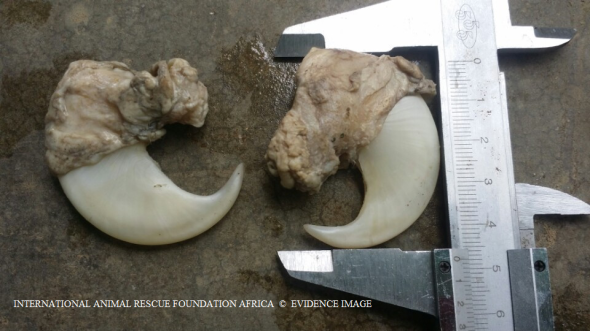
Tiger claws are measured like rhino horn and ivory. This process helps traders to price up and show legitimacy to buyers.
E.A.D officers are (as explained) unsure on the exact number of tigers that these individuals in question are breeding and trading within the home and other premises. From the evidence obtained the number of teeth and claws points to at least 20-30 tigers bred, killed and processed in Thailand and Viet Nam. An unidentified trader who’s name we cannot make public proudly shows on their Facebook page how easy it is to skin a tiger (images seen below).
Tiger testicles are also used within the Traditional Chinese Medicine trade, however this is the first time we ourselves have actually come across such tiger testicle trade (normally one views tiger penis on sale real and counterfeit). The trader[s] we’ve been investigating boasted within an online forum how tiger testicles are now more popular than tiger penis itself.
The image below shows the trader boasting how large the male tiger testicles are before he then sets about to remove, bag and weigh up the testicles for sale. Its believed the testicles ‘may’ be transported illegally into China or onto wealthy Viet Nam/Chinese restaurants where the soup of tiger testicles is ‘allegedly’ known as a delicacy and (aphrodisiac soup). None of which holds any medicinal evidence whatsoever.
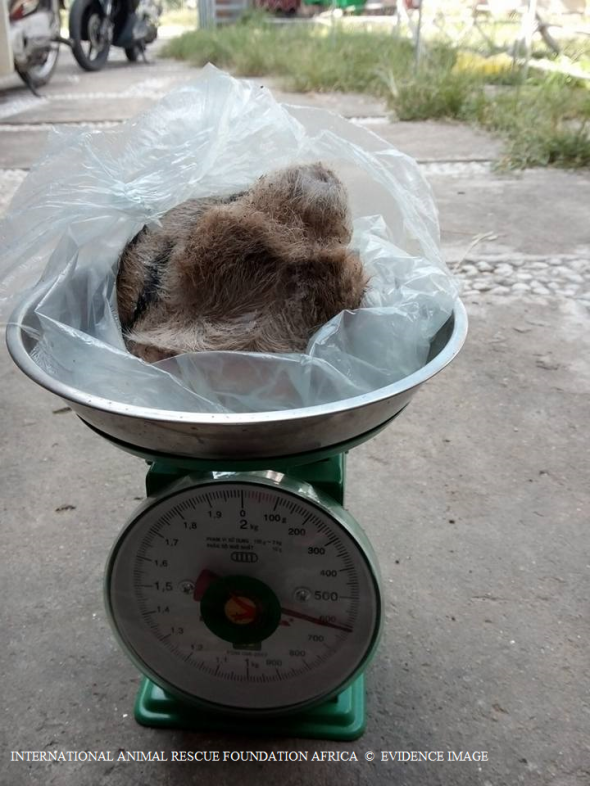
Tiger (testicles) weighed for sale. The testicles will most likely be used to produce tiger testicle soup.
Back in 2013 the Humane Society of the United States stated a total of twenty seven countries had outlawed the sale and trade of shark-fin for the production of shark-fin soup. One would then be led to believe that since this mass outlawing and bans on trade, it would therefore heavily restrict shark poaching and trade of shark-fin soup. In Thailand and Viet Nam it appears not to be the case (both countries have no bans in place).
Unfortunately when E.A.D officers investigated the traders herein this article, we uncovered more than enough shark-fin trade to prove that neither laws or outlawing of the trade is having any real effect on stopping or restricting the trade of shark-fin. On speaking to the unnamed trader within a forum online for TCM trade, the individual boasted how easy it was to obtain shark fin, an transport that into Asian and North American countries. The images below show shark-fins drying at the traders apartment in Thailand and Vietnam.
International Animal Rescue Foundation Africa and two investigation units aligned with us; External Affairs Unit and Operation Trojan Horse (Cyber Crimes Division) have been tracking countless illegal wildlife traders all over the world since IARFA established the (Cyber Crimes Unit). While the evidence above may shock many, its little compared to what we locate every month. Investigative officers work under immense pressure, stress and must work fast to ensure that traders once located are reported to the relevant agencies.
On the 23rd December 2015 Interpol’s Environmental Crime Unit and the Cyber Crimes Serious Investigation Team were alerted to our findings, while we can state now that our investigation which we have decided to make public has shown much data on trade. The investigation is considered normal due to the size. The most shocking aspect of this investigation was the fact that our younger generation are more active now within this illicit trade. That in itself poses some rather large problems and concerns, and one that now needs addressing at both government and educational level.
As of today 29th December 2015 this investigation has since been increased to “extremely urgent”, and the need to locate these men and women is critical before any further animals die, in Asia and Africa. All three individuals have shown a complete disregard to the fact rhino’s, elephants and tiger populations are losing ground throughout the Asian and African continent. Sharks and pangolins are also nearing extinction too. Trade and demand as explained has skyrocketed online to worrying levels, yet slowly vanishing on the ground.
Thailand is the new hub for rhino horn trade and Facebook and other social media platforms are being exploited to trade just about anything wildlife, regardless of such products being illegal. Trade and demand on the ground has also changed from elder to younger individuals (as explained) which is very worrying. One of the largest trading countries that we are seeing to date, is that of Thailand, which would explain why the BBC back in 2014 couldn’t locate much in the way of rhino horn (in Viet Nam).
Since General Prayut Chan-o-cha took over running of Thailand back in 2014 wildlife trade has skyrocketed. While we cannot prove increasing trade has anything to do with General Prayut Chan-o-cha, it just seems too coincidental that a sudden spike of rhino horn, ivory and other wildlife products has shot through the roof.
Facebook was where this investigation ended prompting us to then send all evidence to Interpol. Facebook hosts some 1.32 billion users worldwide, 32% of which use cell phones to login into the United States platform, thus making it difficult to locate traders and dealers.
International Animal Rescue Foundation Africa have been lobbying Facebook since the start of the year, to implement new terms and conditions to heavily disrupt this trade and demand. A petition that has amassed over five thousand signatures can be signed here and shared. However we’re not holding our breath. Should the Facebook platform and its CEO Mark Zukerburger not implement new polices on trade and demand of illicit wildlife products we will unfortunately soon see many species of animals pushed into extinction. Ivory and rhino horn trade has exploded to worrying new levels. Rhinos, elephants and tigers are being poached moreover, and the internet as well as ground trade is awash with anything from drugs, firearms, child trafficking (most of which links back to illegal wildlife trade).
One of the men that is pictured above is responsible for the trade of wildlife parts above, he has since been reported to Interpol along with his partner and other associates whom we have been investigating since June-December 2015. The individual above is believed to be in Hanoi (Nguyen), or Ho Chi Minh City, possibly with an accomplice. His name and other accomplices we cannot make public as yet. The image is recent.
A more closer image of the individual and the female is located below. We believe based on evidence obtained that the male is using the females account on Facebook too.
May this be a stark warning to all wildlife traders out-there. International Animal Rescue Foundation, External Affairs and Operation Trojan Horse will eventually catch up with you. If we catch you trading in wildlife products we will monitor you on the ground and online. From there we will press for your arrest and detention.
Within the past year Interpol has been escalating their new project identified as OPERATION WORTHY II Operation Worthy is targeting many individuals involved in international and local serious crime.
Updates on this case will follow as and when we’re updated. Thank you for reading.
Chief Environmental Officer (CEO)
Director
If you would like to make a small donation to our organisations investigations department please click the link >here< Your donation funds 10% of our environmental projects, while we ‘self fund’ the remainder 90%. Please contact us via the email above for further information. You are not at liberty to donate, nor do we beg.
“REPORT WILDLIFE CRIME TODAY”
Where Are Our Children? Brutality of South Africa’s Past.
WHERE ARE OUR CHILDREN?
Introduction:
Despite our best efforts to educate and push awareness into the public domain in relation to big cat hunting and the petting industry in South Africa and neighboring countries. We have uncovered a rather large core of dedicated students and volunteers from America, Canada, eastern and northern Europe and South America that still defy the basic knowledge made public, that what they are practicing is harming both captive and non-captive felids. These students actions are contributing to the spread of disease and is supporting abuse no end. Furthermore International Animal Rescue Foundation Africa’s Environmental Investigations Unit has unearthed countless British travel agencies, South African universities and even veterinary establishments that support the petting industry. (Image credit Nick Brandt)
The Petting Industry Explained:
Since the release of the Blood Lions documentary one would have thought that students whom continue to visit these seedy and corrupt lodges, parks and alleged reserves, would have taken note that their behavior is more a hindrance to conservation and wildlife alike, rather than supporting ethical conservation itself. Unfortunately this ‘hardcore group’ of mostly disrespectful, uneducated students and volunteers have simply brushed that advice and education aside. The petting and hunting industry within South Africa is increasing in size, despite vast reams of data and evidence made public that clearly shows these industries have no value to conservation whatsoever.
International Animal Rescue Foundation Africa made it quite clear that we would expose students, volunteers and tourists that defy basic conservation education, while participating in unethical and abusive non-conservation tourism. Trainee veterinary technicians, private vets, school leavers, trainee zoologists, backpackers, doctors, judges down to missionaries, pilots and even celebrities are all contributing to the extinction of our African Lion, Cheetah, Leopard and even non-endemic Tigers. While we are aware that some infant and adult cats have been rescued via the many lodges, parks and farms within South Africa, and that other animals simply cannot be released into a reserve, the fact of the matter here is that breeding is ongoing, interaction and abuse is rife, and little if any reintroduction programs are being seen. When we investigated the industry back in 2011 never did we expect these pseudo conservation practices to skyrocket to gargantuan proportions.
Below we have included a list of students and volunteers down to visiting tourists that continue to place our African wildlife and captive species in danger from a multitude of virus’s, diseases down to actively contributing to the extinction of our threatened wildlife not forgetting abuse being played out. We have given many volunteer agencies, tourist agencies, lodges, parks and reserves ample time to clean their unethical fake conservation behavior up. They have all bar one refused. We now have no choice but to continue with our actions in the hope that this will open visiting tourists eyes, their employees eyes and teaching establishments that these individuals are aligned too, that this practice and pseudo conservation behavior must stop here and now!
Furthermore we are naming and shaming travel agencies, student gap agencies down to veterinary and South African universities too. When watching the first screening of Blood Lions in South Africa some months back, I knew that harsh measures had to be taken. We are not just fighting the main industries here, were battling multi-million if not billion dollar companies that are all aligned to one-other directly or indirectly. The whole purpose of this article (I of IIII) is to begin breaking the link, showing the evidence of pseudo conservation, educating travel agencies and shaming those that continue to defy basic and scientific education. Furthermore we are without a doubt going to bring these agencies and industries to their knees financially while continuing to expose those that abuse our captive and wild animals.
“STUDENTS & VOLUNTEERS PRACTICING UNETHICAL AND NON-GREEN CONSERVATION IN AFRICA”
The following list has been compiled showing both visiting students, volunteers and supporters of the petting industry within South Africa. We are not prepared to stop with this exposure while the industry continues to boom.
Douda Bis, Robyn Robles from Anglia Ruskin University, Hongyi Fan-devalois, Mandy Blasetti a Veterinary Assistant/Technician at Banfield Pet Hospital, Isabel Quiñone from Ejecutiva de Ventas at Diafrom, Connor William from Lancaster (village), New York, Kormákur Ingólfsson that works for Erhvervsakademiet Lillebælt, Iris Joensen that studies at Tåstrup borger og realskole, Heidi Arsenault a Plant Pathology Technologist at Canadian Food Inspection Agency.
Truman Shumway, Bernadette Pieterse who’s a Ranger at Glen Afric Country Lodge, Laura Victoria that studies at Rutgers University, Johanna Noseworthy that works at Inclusion Powell River, Eleanor Skovgaard that studies at the Scenic Artisan at University of Delaware, Alexane Francisci studying at the Concordia University, Laurence Vanmeerbeeck from Brussels, Belgium.
Lindsay Richardson that studies at ‘a’ American University, Luke Sparkes that studies at Oaklands College, St Albans, Johanna Eskelinen that works at the Yacht Week, Sharon Franks a Waitress at Grand Central Basildon, Capucine Bénazet, Lycée Guy Chauvet, Abby Ellison Ashley Snyder a Bartender/ Server at Outback Steakhouse, Emma Jayne Palfreman (self employed), Henrik Guldbrandsøy that studies at the Bergen University college, Fabienne Thoma that studies at the Zurich University of Applied Sciences/ZHAW, Caitlin Ferguson that works at Poppy and Pint.
Doug Richardson that studies at the University of California, Santa Barbara, Nadia Borg that works at Forbrugsmateriale Produktion at Struers ApS, Sue Harrison Kasperek, Eirik Lerum Vigerust from Boulder, Colorado, Torfinn Rønquist Antonsen that studies at Ørland videregående, Naomi Westhof a Highlight Editor at Sheffield United, Emma Enea whom is a Wildlife Coordinator at Nemacolin Woodlands Resort, Sandi Stein Blasetti that studies at the University of Maryland University College, Kayleigh Harrop that studies at the University of the Highlands and Islands, Roberto Francisco Newton from Hemet, California, Albert Chang that studies at the University of Toronto, Zoi Kakouris, Marie-Louise Lorenz whom works at Vibholm Guld & Sølv, Wai Duong from Bramfeld, Hamburg, Germany, Alicia Taylor from the village of Wijnandsrade in Holland.
Chao Qiu from Wisconsin, Gretchen Newell whom works at World Tennis Club, Bainet Yusufu from Ihlathi High School, Annika Beyrle whom comes from the German town of Elmshorn, Laura Coughtrey from Lord Williams’s School, Taylor Ann Chism from Spokane Falls Community College, Mari Irby from Saint Mary’s College of California, Cathryn O’Sullivan from London, United Kingdom, Katharina Winther whom works at Konsulent at Københavns Kommune, Tathiane Forão from the Federal University of Pernambuco, Randy Risher from Phoenix, Arizona, Glen Peck from the University of Tech Pretoria, Ruby Bell a Clinical Nurse at Healthcare Australia.
Katrine Tufteland from Oslo, Norway, Amandine Pascal, Isabella van Rijckevorsel from the Leiden University, Sherie Darmon from Toulouse, France, Melissa Quinn that works at Nando’s Parrs Wood, Amy Steele a Team Leader at Capital FM Arena, Georgia Mae Lipsham, Customer Services Adviser at Rich Products, Linda Schneider from the University of Miami, Esme Abbott, Shyoo Hayashi Marcus whom works at The Bank of Tokyo-Mitsubishi UFJ.
Sophie McCutcheon, Adam Mark Blake from Portchester, Andrew Bond whom works at Nationwide Insurance, Sandra Nuschele, Nikoline Jensen a Vikar at Børnehuset Eremitageparken, Natty Brown from the Catholic School of Archbishop of Ilsley, Nick Bruno, from The University of the Arts, Nico Schütze from the IFM - Institut für Managementlehre, Ty Broddle from Liverpool, Becki Warshow a Substitute Teacher / Volunteer Tutor at United South End Settlements, Shiran Cohen, Maale shaharut, Steve Lin, Aldo Neto, Bruno Garrido a Shop Seller at MSC Crociere, Julian James whom works at Liceo Scientifico Vittorio Veneto, Natacha Ferreira Ginja from Salto, Sao Paulo, David Chadwick from Northcote High School Michelle Dennis, Jade Vardy, Juliette Richard from Paris, France, Amanda Lynn whom works at Volunteer Southern Africa.
Graham Wilkin ‘a’ Security Adviser, Yaqin Song a Graduate Research Assistant at Georgia Tech, Stella Maria Galíndez from Buenos Aires, Argentina, Dan Maslach a Mechanical Engineer / Fuel Cell Lab Manager at U.S. Army TARDEC, Amanda Gross from the North State Carolina University, Andy Barrowcliffe from the Whitcliffe Mount College, Emily Rabska whom is a Kennel Supervisor at Eau Claire County Humane Association - ECCHA, Daniel Stratti from Sogndalsfjæra, Sogn Og Fjordane, Norway, Jo Kamenir, Full-Time P.E. Teacher at Epic Christian Academy, Lea Francisci from Montreal, Quebec, and Franziska Romrig.
The list above has been taken from a public database of which we [the organisation] haven’t committed a criminal offence in obtaining this data. As you can see above the vast majority if not all students, volunteers and supporters have no real expertise within conservation or animal welfare. Many of the individuals above are school or university goers or leavers, gap year students, or just general members of the public whom have on their own accord freely researched petting and reserve industries. From our own research we know that the vast majority of these individuals have visited South Africa via the company known as Volunteer Southern Africa that offers you the chance to volunteer at parks, lodges, farms and alleged ‘conservation teaching/science establishments’. On contacting the Volunteer Southern Africa organisation the company stated:
“We offer those the chance to assist in rearing and abandoned cat programs to help threatened and endangered species”
International Animal Rescue Foundation Africa see’s otherwise, and so should those that are offering students the chance to interact with baby Lions, Cheetahs, Tigers and Leopards. While we do not dispute the fact that some establishments within Southern Africa do run programs for orphaned and abandoned cats. Professional big cat rescues and orphanages do not under circumstances allow you to interact, walk, pet or pick up captive animals, moreover if they do allow interaction [this practice is very minimal]. Nor will these ‘professional’ rescues and orphanages continue to breed such animals thus again allowing the public to interact while making a tidy profit. And its not just these industries within South Africa, Zambia and Zimbabwe that are making colossal profits too, British travel agencies as explained above are also cashing in on animal exploitation (and they know it too).
No felid from Lions, Cheetahs, Leopard or Tigers can if hand reared ever be freely released into the wild, and if released into the wild the chances of their survival is incredibly slim. Yes there are such cases from which animals have been reintroduced into the African wild after being hand reared or kept within captive facilities for the vast majority of their lives, however these are rare and very few animals do actually survive.
Ukutula Lion and Research Center, Glen Afric, Lion Park, The South African Lion Park, Volunteer Southern Africa, do not under any circumstances reintroduce anyone of their animals that have been reared or sold to them from unidentified individuals ever release their cats into the wild. What these five unethical organisations actually practice is ‘cub petting’ and ‘adult cat petting’ which goes completely against the ethics and rules of conservationism. Moreover the five identified industries above and countless more are being endorsed and supported by the following professional establishments; Veterinary Faculty at the University of Pretoria at Onderstepoort, the Zodiac Animal Clinic and Old Chapel Veterinary Clinic in Pretoria. What’s even more worrying is that despite the public outcry, Blood Lions documentary and worldwide condemnation at such practices (even when evidence is shown of abuse), The Department of Nature Conservation undertakes checks to ensure that all abuse is being played out according to South African law. (Excuse the sarcasm there)..
Environmental Conservation Scientists and Wildlife Veterinarian Officers are becoming increasingly frustrated at viewing such hypocrisy from local and, overseas tourists that are allegedly promoting animal welfare and rights. Take Mme Mandy Blasetti, from Elkridge Maryland. Mme Blasetti works at the Banfield Pet Hospital in Maryland whom back in June of this year visited the Glen Afric Lodge.
Image 1&2: On questioning Glen Afric, the lodge stated that petting was not on the agenda.
As a Conservation Scientist myself I know very well that such human interaction only inflicts more harm to our African Lions than is being seen within this ‘very innocent looking image’. I’d have expected better too from a so called Veterinary Technician that of my own understanding should have been taught at university or college that this behavior is totally unacceptable. But why is this behavior unacceptable, what is the big issue about petting? Firstly many people that visit game lodges, parks or farms believe that just because hunting is not on the agenda (or because they are not aware of it), these animals will not suffer. That itself is complete and utter nonsense. So lets talk petting.
“Breeders and captive felid keepers quote many the following answers to questioning students”
Breeders, farms, lodges and “big cat projects” who charge or ask the public to pet and take photos with young cubs often tell people the following lies:
- That the exhibitors are “rescuers” and operate “sanctuaries”.
- That the cubs have a good life while being used to make money.
- They enjoy being moved about and repeatedly awakened and handled by dozens of people all day.
- That blowing in the cubs face “calms” them down.
- That dangling them by holding under their front arms and bouncing them up and down “resets” them.
- That close up photos with flash does not harm the cubs.
- That it is safe for the cubs and for humans, and legal, to allow contact with cubs from when they are only a few weeks old to when they are six months or more old. (In South Africa this is still legal).
- That the exhibitor must keep constantly breeding and using the cubs to make money because that is the only way he/she can support the adult animals he/she keeps.
- That the exhibitor is doing this to promote conservation in the wild.
- That the exhibitor is teaching people not to have exotic animals as pets.
And the biggest lie of all: - That the cubs will have good homes after they get too big to be used to make money from petting.
“Are you a student that has been given anyone of the answers above? If so your promoting pseudo conservation, none of which has any value to conservation whatsoever”
We [the organisation] know too well that any petting or interaction industry that is either supporting hunting or indirectly supporting the canned hunting industry regularly reads our articles. We also know that they go to great lengths to clean their image up while still promoting pseudo unethical conservation. Lastly we also know that many breeders, lodges, parks Etc. will think up many different alternative answers to visitors questions after reading the above, as they know countless supporters read our articles. That’s what makes International Animal Rescue Foundation stand out from other non-governmental organisations. We don’t only fight to prove our point, we provide scientific facts from non-related experts and our own experienced scientific team too.
Virus and Disease
Petting, breeding and “big cat projects” rarely do tell their visiting students, volunteers and tourists the dangers in relation to petting cubs and adult cats. Within South Africa the current protocol (although its not necessarily the law), is that all new born cubs must be vaccinated from the ages of six weeks old. New born Cheetah, Lion, Tiger or Leopard cubs are not vaccinated automatically after birth. This in turn places visiting students and volunteers in danger of catching ‘a zoonotic disease’.
What is a Zoonotic Disease?
A zoonotic disease is a disease that can be passed between animals and humans. Zoonotic diseases can be caused by viruses, bacteria, parasites, and fungi. These diseases are very common. Scientists estimate that more than 6 out of every 10 infectious diseases in humans are spread from animals to humans. Still believe the industry is safe? Lets take a look.
A May 2011 statement from the National Association of State Public Health Veterinarians (NASPHV) recommends that the public be prohibited from direct contact with cubs due to the risk of illness to humans stating” …ringworm in 23 persons and multiple animal species was traced to a Microsporum canis infection in a hand-reared zoo Tiger cub.” Zoonotic diseases — those that jump to humans — account for three quarters of all emerging infectious threats, the Center for Disease Control says. Five of the six diseases the agency regards as top threats to national security are zoonotic. The Journal of Internal Medicine [2012] estimated that 50 million people worldwide have been infected with zoonotic diseases since 2000 and as many as 78,000 have died.
Image: Student volunteer feeds a cub that’s been snatched from its mother at birth.
Even with stringent monitoring procedures in place within South Africa rarely do you see, read or hear of zoonotic diseases being passed from animal to human (in South Africa). That doesn’t mean such diseases aren’t documented, far from it. Remember that most people visiting petting parks, lodges and farms or those that interact with captive and/or wild ‘adult’ animals end up travelling back home. So theoretically these virus and diseases will often be noted at the last minute or in this case on returning home. We do encourage tourists, students and volunteers to research zoonotic diseases documented within the countries that you are visiting though.
SCIENTIFIC FACT:
- Numerous instances of E. coli and cryptosporidiosis infections as a result of petting zoo visits in US, Canada, UK and elsewhere. Some of these infections have resulted in severe illness and even death.
- Screening of animals is usually limited to the common diseases and may not include all infectious diseases. Furthermore, screening cannot guarantee public safety.
- Cryptosporidium is only one of a number of bugs that can be picked up during a visit to a petting farm. Other common infections are caused by E. coli and Salmonella.
- Cases of E. coli linked to farm attractions are at their highest levels between June and October. An infection with E. coli can lead to mild gastrointestinal illness or in serious cases it can cause bloody diarrhoea which can lead to severe illness or even death.
- People don’t need to have direct contact with the animals at a petting farm to get sick. Outbreaks of illness have occurred in people that only had contact with the petting farm environment (e.g. gates, fences).
- From 2011 to 2015 over 849 cases of ringworm have been reported from tourists, volunteers and students that visit South African farms, lodges and parks. Yet Nature Conservation South Africa and the SPCA’s still believe that public safety is pretty much okay.
From last month [October] students and tourists continue to question us demanding that we show proof of hunting. These students and tourists do honestly believe that hunting is obviously the only problem here, and if its not shown or there is no proof then all is simply okay. We don’t need to show proof of hunting, because until our questions below in relation to [hunting] directed at those in are answered then we will continue to believe that hunting is also a pivotal factor here within this pseudo conservation industry. Ukutula Lodge, The Lion Park, South African Lion Park, Glen Afric, and Volunteer Southern Africa have all failed to provide any explanation as to why they they allow, promote and encourage petting of which we know like other NGO’s leads to hunting one way or the other. But why, how does it lead to hunting? Firstly lets make ourselves crystal clear here. Just because hunting is not seen on anyone of the petting parks, lodges or farms doesn’t mean under circumstances that hunting isn’t going on elsewhere. The wool is being pulled over many tourists eyes. (Please view the Blood Lions trailer below).
Volunteer Southern Africa that is endorsed and promoted by both Amanzi Travel UK, Rooms For Africa, Trip Adviser and Volunteer Travel from I-to-I UK, from 2010 to date encourage students, volunteers and tourists to visit their [Living with Lions Project] We are shocked at the many SPONSORS that also support this project too. The project is 100% cruel, increases disease, zoonotic diseases from animals to humans, see’s mother Lion left in distress when cubs are cruelly removed, has the potential to pass on virus and disease from human to animals and leaves nursing cubs that require a stress free environment stressed out. (See view video below)
What the Living With Lions Project Doesn’t Advertise
FACT:
There are numerous issues with releasing hand-raised Lions into the wild. These Lions will always associate humans with food (as they have always been provided with food from humans while they have been growing up). Hand-raised Lions will still have their natural instincts; however they will not have the same natural fear of humans that wild-born Lions have, which will make them more likely to come into conflict with humans after their release.
FACT:
These Lion parks make a considerable amount of money from tourists who pay for interactions with cubs. Generally, cubs that are aged between 1 and 3 months are used as these are most ‘suitable’ as they are small, photogenic and at an age where the size of their teeth and claws mean that the damage they could do to tourists is limited.
FACT:
However something which is overlooked is the fact that young animals (like humans) need a lot of rest and sleep whilst growing. On busy days at these parks when there are a lot of tourists wanting their chance to play with a Lion cub, the cubs are not given this time. Regular interaction with humans can also cause health problems with the cubs. Many cubs in these facilities have been known to die of stress-related diseases and they can suffer injuries by being incorrectly handled by inexperienced staff, volunteers or tourists.
Image: Selfish tourist interacting with confused Lion cub destined for death.
FACT:
In order for the parks to be able to offer interaction opportunities with cubs, they are taken from their mothers after a few days to a few weeks (depending on the facility). This can lead to viral, respiratory and nutritional problems with are common amongst hand-raised predators due to substandard milk formulas being used to replace the mother’s milk. This can lead to lower immunity and the regular contact with humans can cause the cubs to contract diseases such as ringworm (often passed from visitors’ own domestic cats at home).
FACT:
The removal of cubs from their mothers at a young age also leads to problems for the mother herself as the Lioness can come back into oestrus sooner than she should do. This allows the park owners to breed from the Lionesses at a much more regular rate than Lionesses in the wild would reproduce. This in turn allows a constant supply of cubs that can be used for interactions.
FACT:
The Lion breeding industry is growing and with it so are concerns of welfare issues for these Lions. Most volunteers and tourists who go to these parks do so unknowingly and with the best of intentions. When questioning the conservation ethics of them, they are told that they are helping to increase numbers of Lions in the wild, but evidence of this is hugely lacking and this is linked to the issues of releasing hand-reared Lions into the wild, as discussed above.
FACT:
These facilities need a constant supply of cubs at the right age for interactions, where they are still cute for photographic opportunities, small enough to cuddle and of little danger to visitors, which begs the question, what happens to these cubs when they are too old for interactions?
FACT:
There is no straightforward answer to this but there are a number of agreed possibilities that are widely accepted within wildlife circles. Many of the Lions are sold for private collections but the most commonly acknowledged destination for these Lions is into the canned hunting industry IARFA knows and holds evidence that four of the five petting industries above are involved within the hunting industry. Canned hunting refers to the highly controversial act of raising an animal within a confined area and then hunting the animal within a confined area in order increase the likelihood of the hunter obtaining a kill. Therefore visitors and volunteers at such facilities are unwittingly supporting the canned hunting industry. Furthermore what they don’t know about hunting I.e they do not see will push them into the false sense of belief that hunting is not occurring simply because its not occurring on the questionable lodge, park, farm of reserve.
FACT:
There is a lot of money in this industry as people are willing to page large amounts of money to shoot a Lion, and canned hunting makes this possible for people who have limited time and hunting skills as the animal is in a confined area. The money that can be generated from selling Lions into this industry is enough for Lion parks to sell their Lions that have previously been used as interaction cubs to canned hunting facilities where tourists can have the ‘ultimate hunting experience’ by shooting a Lion.
IF you are still reading this document and do firmly believe that what your supporting is ethical conservation then we do have major problems. International Animal Rescue Foundation Africa has gone to extraordinary lengths to show to you what the petting industry really is. We know that some students, volunteers and tourists will have been informed that some if not all of the animals that are on the premises they have visited are most likely rescues. So if that’s true then the following questions below and points raised can be answered?
QUESTIONS NEVER ANSWERED
Can the premises in question back these claims up? Can they show documentation that proves these animals were rescues? Where did these animals come from? Why are there so many cubs? Why in many images do we witness many pretty young women and handsome young men holding cubs? (that question should be enough to prove to you that the industry your supporting is indeed a marketing industry) that uses sly tactics to emotionally eye rape young and inquisitive students, volunteers and tourists. Why does Ukutula Lion and Research Center like the other four questionable lodges, parks, farms and ‘Living with Lions Projects’ use systems such as ECOscan. ECOscan is a system of which Lions are sold on to exotic buyers, farms and hunting lodges. Furthermore the system also protects the buyers information I.e name, company, location and address. See image below.
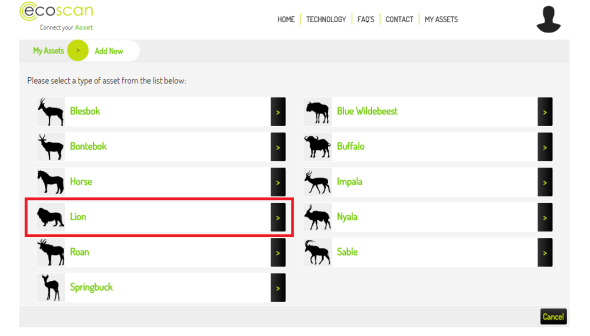 ECOSCAN is a system that Ukutula Lion and Research Center uses to sell animals on to buyers. Ukutula Lodge has also implemented into their terms and conditions one of the following rather interesting rules:
ECOSCAN is a system that Ukutula Lion and Research Center uses to sell animals on to buyers. Ukutula Lodge has also implemented into their terms and conditions one of the following rather interesting rules:
- Buyers must agree to the animal being chipped that both ECOscan and Ukutula Lodge monitor.
However what Ukutula Lion and Research Center do not tell you is that the buyer once they breed that Lion, them cubs are immune from this system. So after birth has taken place Ukutula Lodge has then distanced themselves from the questionable buyer. Meaning its “more than likely that hunting is occurring”. Lastly on checking with South African lawyers no buyer of any Lion from Ukutula does not under any circumstances have to agree with Ukutula’s terms of policies/agreements Etc. A very crafty move by an alleged Lion Research Center, one of which the public cannot easily trace that buyer too. Please view image below and click on the image to view which British Travel Agency supports it, alternatively please click >here<
Image: Volunteer Travel I-I UK supports Ukutula Lodge that Blood Lions called into question.
Last month the South African Non Governmental Organisation, Blood Lions called into question Ukutula Lodge that refused to allow the Blood Lions team onto their property to investigate claims in relation to canned hunting. To read more on that subject please view the link below:
http://www.bloodlions.org/us-volunteer-speaks-out-cubs-hired-for-parties-and-events-ukutula/
The last thing we ever wanted to be forced to do was to begin exposing the petting industry at an angle that sees us exposing those that directly contribute to the industry that has skyrocketed over the past ten years. Unfortunately we’re being forced too. We’ve provided more than enough facts, accounts, and evidence. What or more to the point how much more evidence do students, tourists and volunteers really require?
Image: Students at the Living with Big Cats Project.
Image: Student at the Living with Lions Project.
Image: Student at the Living with Lions Project.
Image: Student advertised on the UK Travel Firm Amanzi Travel UK.
Image: Lonely cub advertised for petting at the I to I Volunteering UK agency.
No money the public spends to pet or take photos with cubs ever goes to support conservation in the wild. In fact, the opposite is true. There is a huge and growing market for Tiger and Lion parts, and Tiger and Lion “derivatives”, i.e. products made out of Tiger and Lion parts like Tiger and Lion bone wine. A dead Tiger/Lion is worth up to $50,000 for its parts. Breeding what US Fish and Wildlife Service calls “generic” Tigers like the ones used in the mall exhibits is not tracked, similar to ECOscan system used by various lodges and parks in South Africa. So there is no way to know how many born Tigers/Lions are killed to have their parts illegally sold into this trade. And, the more that trade expands, the more incentive the poachers, hunters and farmers have to kill Tigers and other big cats in the wild and via hunting within South Africa. Yes sadly, farmers and lodges, parks and alleged “living with big cats programs’ will sell after hunting (in some if not all cases) bones on to the Asiatic market to double their money. All supported by you the volunteer, tourist and student.
RECAP:
The cubs used for petting exhibits/farms Etc are torn from their mothers shortly after birth, causing emotional pain to both the cubs and the mothers. Imagine what that mother experiences after enduring the long pregnancy and finally giving birth, filled with the instincts to nurture her cubs, and then having them snatched away. The breeders take them away and have people handle them so the cubs will “imprint” on the people instead of doing what is natural and imprinting on their mothers.
And what is life like during the months they are used to make money for their owners? Cubs this age want to roam, explore, test their young muscles to develop coordination, and sleep for extended periods of time without interruption. Watch what happens during these exhibits. The cubs are repeatedly awakened so a customer can pet them instead of being allowed the sleep their young bodies need. When they try to wander they are repeatedly yanked back. And where are they when not on exhibit? Well I’m sure you can answer that question. A nursery maybe? Possibly, without the mother that is pining for her young? Just because its a cozy looking nursery means nothing.
Thank you for reading.
Dr Jose C. Depre.
Chief Environmental Officer and CEO;
PhD. MEnvSc. BSc(Hons) Botany, PhD(NeuroSci) D.V.M. Environmental & Human Science
Environmental and Animal Rescue Investigations Chief Officer.
Is euthanasia a gift of love?
Is euthanasia a gift of love?
Back in December 2012 I witnessed the harrowing suffering of a dog being kept alive for reasons I still cannot understand. The dog named Tidus had been viciously assaulted by child thugs and had a flammable substance flung over his delicate little body, thugs then set the dog ablaze. The injuries were some of the worst burns I myself have witnessed in years of veterinary medicine.
Tidus suffered some 75-80% third degree burns and was suffering dearly. Third degree burns in both humans and animals are the worst kind of burn injury you can sustain. A third-degree burn involves the full thickness of skin and extends into the subcutaneous fat. These burns appear charred, dry, and leathery. The hair comes out easily when pulled. Deep burns, because they destroy nerve endings, usually are not as painful as second-degree burns.
When nerve endings are destroyed either in animals or humans from third degree burns one cannot feel any pain within the effected area. Had Tidus’s life been preserved he would have had to been monitored round the clock twenty four seven to reduce any risk of him harming himself accidentally. A mere slip up and any injury sustained to the “third degree burned area” he’d neither feel any pain or be able to make his pain known to humans through crying or yelping.
Upon viewing medical online X-Rays, documents from the medical team caring for Tidus I also noted the little dog suffering from 10% second degree burns, and where skin hadn’t been torched down to the nerve endings first degree burns too mostly around the ears, nose, eyes and genitalia. Second degree burns are the most painful and can leave both humans and animals withering in pain and traumatic shock syndrome. A second-degree burn is deeper and there is blistering. If there is no infection, healing is usually complete in 21 days.
From a “professional” point of view if more than 50% of the dog’s body surface is involved with second-degree burns, or if more than 30 percent is involved with third-degree burns, survival is unlikely. So I still to this day question why a vet whom is supposedly acting professionally continued to place Tidus through further treatments, minor operations involving anesthesia down to experimental skin replacement that still today is not widely used on domestic animals with such massive skin burns.
Putting the animal under for minor operations with over 50% skin burns is dangerous too. I do question the motives of this vet, veterinary team and why this suffering animal was not euthanised compassionately. I’ve included pictures below for your information that depict Tidus under anesthesia, Tidus before any non-surgical and surgical operations were carried out and Tidus awake.
Picture (2) depicts Tidus before treatment commenced. Burned skin and hair is easily removed when third degree burns are present, the areas flesh can be seen would have caused the dog incredible amounts of pain and discomfort. Unfortunately Tidus’s treatment was in vain
Picture (3) Tidus can barely stand up and within videos online one can see he is clearly in Trauma shock which is quite typical for this type of injury. One can clearly see parts of the hind leg skeleton structure on display too - this in itself is a clear indication that Tidus had been alight for some minutes
From November to December 2012 a total sum of over $44,300USD was raised for the treatment of Tidus. Burns such as these would have required much funding for primary “veterinary care” in itself. Furthermore had Tidus’s life been preserved, secondary and tertiary care would most certainly have run into hundreds of thousands for care and medicine.
Based on the owners own financial position, the organisations responsibilities for other animals but more importantly the “survival rate” regarding second-degree burns, or more than 30 percent of third degree burns Tidus should have been humanely euthanised after a complete professional assessment was undertaken by professional vets and veterinary specialized burns teams taking all factors into consideration.
Was Tidus kept alive to prove a point, was it an act of love, or was it due to the copious amount of funding that flooded into protect Tidus? I’ll never know myself, however if I or any qualified and professional veterinary team was presented with an animal with such appalling and life threatening injuries we have to weigh the chances of survival up, financial position and community care, whilst leaving emotional feelings out.
Tidus had no chance of survival, however Tidus is one of many animals we see daily where owners will fight tooth and limb to prolong life without listening to the professional advice from those whom have treated and cared for animals for years. Unfortunately Tidus didn’t make it, weather he died peacefully or in pain we’ll never know.
Fortunately there are many loving and caring animal lovers throughout the world that go heaven and earth, spend hundreds of thousands and would do anything to save the life of their dog, cat or favorite rabbit Etc. There’s nothing wrong with this and we as veterinary officers respect such care. Compassionate and caring adults, children down to complete strangers acting unselfishly we admire. However as much as we love an animal this very love can seriously hinder or even lead to animal abuse occurring if such cases of animal mistreatment are not properly managed by veterinary teams. In Tidus’s case and being frank the vet was only prolonging life whilst the little dog was suffering. That is abuse. We wouldn’t keep a human alive that’s been seriously injured who’s chances of survival are nil, so why an animal?
Making the Call: Euthanasia
I’ve witnessed in many veterinary practices men, women and children emotionally distraught at the sheer thought of knowing their companion animal may have to be humanly euthanasied. Its a very tough decision for the best of pet owners to make however their decision is quite understandable. Pet owners have grown use to their loving companions needs and socialization, their wittiness, in a way they are not really seen as a pet, more another human like species. Making the call is quite difficult however we all have to take into consideration the suffering of the animal and work quickly to reduce any needles suffering, cost and after care Etc.
Veterinary officers also have to take into consideration care, can the owner whom for example may too have medical conditions themselves, has work commitments, or lives by oneself with little monetary income actually cope with the care of looking after a seriously ill, injured or neglected animal?
Do the owners have insurance, can an animal charity help? In some cases charities can help. In Tidus’s case he had a 501 (c) 3 helping however to what extent I still question. Tidus was in my own eyes was used as a mere pawn to garner as much funding as possible, much if not all of that funding didn’t even go towards Tidus’s care. In fact I do believe around $3000 out of the $44,000 raised for care went into helping.
Some examples below are indicators that your pet dog or cat Etc are suffering of which is the time to consider humane euthanasia or to take your companion animal to the vet for a re-evaluation.
Chronic - Non-treatable
- He/she is experiencing chronic pain that cannot be controlled with medication (your veterinarian can help you determine if your pet is in pain).
- He/she has frequent vomiting or diarrhea that is causing dehydration and/or significant weight loss.
- He/she has stopped eating or will only eat if you force feed.
- He/she is incontinent to the degree that he/she frequently soils themselves.
- He/she has lost interest in all or most of his/her favorite activities, such as going for walks, playing with toys or other pets, eating treats or soliciting attention and petting from family members.
- He/she cannot stand on their own or falls down when trying to walk.
- He/she has chronic labored breathing or coughing.
Non-treatable - Injuries/symptoms/disabilities that have outweighed overall life
- He/she has suffered non-treatable burns either over 30% of their body, quality of life is way below average - prolonging life would be considered abuse.
- He/she is suffering from incurable cancer Etc, treatment would only incur more suffering in any animal that is considered not fit to undergo any further treatment.
- He/she has been involved in a serious road traffic crash, accident Etc, injuries sustained resulted in complete incapacity. If all four or all two legs have been incapacitated keeping the animal alive would be considered abuse.
- He/she has no use of either the front or hind legs however can still walk with the aid of disability wheels, However where such contraptions cannot be located or purchased euthanasia must be considered as a last resort.
- Where insurance is not in place and animal is going to suffer without treatment/no funding can be obtained euthanasia must be considered. Prolonging the life of any “suffering” animal where funding/grants/loans/insurance cannot be obtained the welfare of that animal must come first over the overall owners love for keeping the animal alive.
Quality of life as a whole
- Quality Of Life: looks at the overall experience of a pet’s present existence.
- Pain Assessment: looks for signs of pain and suffering.
- Insight: Looks into the companion animal’s mind, in order to find out what they want us to do.
Animal euthanasia is the act of humanely putting an animal “to death” or allowing it to die as by withholding extreme medical measures. Reasons for euthanasia include incurable (and especially painful) conditions or diseases, lack of resources to continue supporting the animal, or laboratory test procedures.
Euthanasia methods are designed to cause minimal pain and distress. Euthanasia is distinct from animal slaughter and pest control, which are performed for purposes other than an act of mercy, although in some cases the procedure is the same.
In domesticated animals, this process is commonly referred to by euphemisms such as “put down”, “put to sleep”, or “put out of his/her/its misery”. Euthanasia can be as explained extremely distressing to all pet owners, however veterinary officers and vet technicians are here to explain the entire procedure, why euthanasia has been considered too. The vet and technicians will go into as much detail as possible, detailing from start to finish why they have come to their decision.
Explanations into the pets medical condition will be discussed too. The vet will allow you if the animal is not in serious pain to think about the decision made. Lastly you also have the right to a second opinion however it must be noted that if the animal[s] chances of survival are only minutes or hours it would be deemed as irresponsible for the owner to then remove the animal[s] for a second opinion of which would only increase suffering and pain greatly. At the end of the day the vets decision must be seen as the final one.
As emotional and upsetting it is to make the final call as long as the “vet has proven to you that nothing more can be done” or has shown to you “every avenue of preserving life has been exhausted within the vets hands” then the vet must be allowed to go ahead with his or her humane procedure. Vets must not be victim of a verbal or physical assault, and must carry out their jobs accordingly within the practice of good veterinary medicine, code and ethics.
Below I have highlighted two major problems that vets face within the pet medical world.
Disabilities: The problems.
Three years ago my parents sadly made the call to have their beloved pet Spaniel humanely euthanised. Zelda was quite an old dog, had enjoyed life to the full. Unfortunately one day she tried to stand up, tumbling to her legs she yelped in agonizing pain. Zelda was suffering from temporary paraplegia of the hind legs. Zelda was taken to the veterinary surgeon of which steroid injections, antibiotics and a course of massage were given.
The paraplegia was only temporary however Zelda began to suffer more and more. Gradually paraplegia went from temporary to permanent paraplegia. Zelda lost control of her bladder and sadly the vets were unable to preserve little Zelda’s life. Had the veterinary team been able to provide doggy wheels Zelda may still be with us today. Even then with both parents working doctors who’d care for Zelda? Regrettably there was none else to care for Zelda, placing her into to a foster home would have induced depression as she loved both parents dearly. Neighbors couldn’t help either as the nearest neighbor was oven ten kilometers away and was elderly.
Over the years I’ve read numerous comments from members of the public on Facebook that see a very sick, diseased and dying animal of which they demand the owner does everything they can to ensure the pet dog, cat Etc is saved from death. Some people believe that life is sacred and will not take a life even if the animal is in misery for example paralyzed from the neck down or a multiple amputee. They judge animal life by human standards and insist on a natural death, however miserable the quality of life. Animals are not human and must never be classed as the same.
They consider that ending a life for any reason other than to eat, is the right of god alone. Most religions depict a god (or gods) who has trusted humans to take wise decisions. Where euthanasia is concerned, the challenge may be for the owner to be an instrument of their god and choose euthanasia to prevent further suffering. For example in the Judaeo-Christian belief system, God gave man stewardship over the animals - refusal to make a humane decision is a prime example of passing the buck!
Veterinary officers do have quite a tough job on their hands when all avenues have been exhausted to help prolong life of any animal. For example in many countries pet wheels (as seen above) are not provided by all veterinary practitioners. In fact I do not know of any vet that I have met or are friends with that have such disability contraptions at their disposal to freely hand out or sell.
Furthermore we must all remember that dogs, cats even horses Etc are not all equal. Where human doctors can freely hand out wheel chairs (E.g) of which require very little tuning, in the case of dogs and cats this is more easier said than done. Vets in many countries do not have the resources, man power, funds or even the access to disabled equipment. As many vets do not have such disabled equipment within their clinic they then have to weigh up the quality of life of their pet patient, bearing in mind too can the owner physically cope with looking after a non-walking animal, cope with the strains of incontinence, exercise Etc. In Zelda’s case both parents could not give their fourteen hour day jobs up, and didn’t have information on where to locate pet wheel chairs.
When viewing such comments from mainly online Activists demanding that the owner[s] not humanely euthanise sometimes I feel like shaking some sense into them. Its not just the pet owners that have to make decisions here its also the veterinary team and the limitations, obstacles and overall care the vet has to decide on.
When do we call euthanasia?
Even in today’s modern world there are more sick repulsive individuals then there was over three decades ago whom abuse and harm animals. Three out of every ten animals I see within my own private medical practice have been seriously abused or neglected by children. Dogs or cats set on fire, horses cut with knifes, or in Xixi’s case children gouged Xixi’s eyes out and cut his genitals off back in 2010.
Xixi was viciously assaulted in Guangdong province, China and while many of you may think such cases are seen only in China you are very wrong, throughout the world there are many selfish, twisted and sick people that go even further to fulfill their deprived desires to abuse an animal.
The report reads:
Child animal abusers cut both eyes, even his genitals were cut off, and his body was covered with holes. Yet Xixi still tenaciously supported his own hurt body, roaming around the neighborhood. The surrounding people did not dare approach him, because Xixi’s appearance was very frightening. Only until a volunteer appeared was Xixi rescued. According to the rescue group, when Xixi was being taken for medical treatment, he desperately bit at the rope that tied him, because Xixi was afraid of being hurt again.
Picture below depicts a savage act of animal abuse by children.
This alone is enough to prove how strong Xixi’s will to live is. However, according to several doctors’ diagnosis, Xixi first suffered external injuries all over his body from human abuse, and then because of not being immediately treated, his wounds became infected and he developed leukemia, causing white blood tumors to form in his body, however since the attack Xixi’s wounds began to quickly fester, his situation was serious and unable to be controlled.
After careful observation by volunteers over a day and a night, it was very exerting and painful for Xixi to urinate and defecate, leading to a part of his intestines to be expelled. Apart from that, Xixi kept going to dark corners. Those who have raised pets and have some experience all know that this is what dogs (and other animals) do when they know they are about to die and want to find a peaceful place to leave the world, and eventually Xixi chose to leave…
End of Report…. 2010.
Every single day we are presented with yet another case of serious animal abuse, and everyday we are challenged on how best to proceed with these cases, is it in the best interests of (any animal) to continue any such medical treatment or is it in the interests of the screaming, shouting and pressuring individuals online? Furthermore will medical treatment help or just increase further pain, discomfort and suffering? While many animal Activists online scream at us all to do something they do at the very best of times fail to see that animals are in a way no different to humans when it boils down to actually “saving” life.
Had Xixi or Tidus been presented to myself and based on the injuries, prognosis, underlying medical condition’s, primary suffering, mental stability Etc both animals would have been there and then after all reports had been completed humanly put to sleep. Both animals would have been put to sleep only after reports concluded injuries, pain, mental state and suffering outweighed both present and future life.
Cost, care, rehabilitation and “would the owner or career be able to continue with such care would also have been taken into consideration, the type of care too. I.e specialized burns, in Tidus’s case he would have required specialist treatment, after care and would have to have been virtually wrapped into a bubble to protect his third and second degree burned and damaged skin.
Xixi’s case though is not identical to Tidus’s case. Tidus was kept alive despite the fact his injuries heavily outweighed his chances of survival. Volunteers that done their very best for Xixi and within a country where medical services are limited worked their hardest to save this little dog. However sadly Xixi like Tidus eventually succumbed to death.
In cases where abuse and neglect are at there very worst veterinarians are challenged greatly. Putting animals to sleep is not one of the hardest parts of being a veterinarian. That’s because euthanasia is often a blessing and gift to a suffering animal. In most vets experience, the hardest part of being a veterinarian is telling owners that their beloved pet has a terminal illness and will soon be leaving this world. The emotions that pass across their faces, even if they have suspected the worst for some time, are heart-wrenching.
Below is a quality of life assessment that you can use yourself to asses your animal and whether its the best time to now take your loved one for medical attention or just a friendly chat. Many characteristics are not, by themselves, an indication for euthanasia. For example, stiffness and reduced interest in play have small numerical values. Adding the smaller values together may generate a score which is high enough to indicate the time has come to euthanize, or the score may only indicate that the pet should be re-evaluated periodically. Vets will only put an animal to sleep after every avenue has been exhausted, however it must be noted in serious cases of abuse putting an animal to sleep quickly to reduce further physiological and mental suffering must be paramount.
The Pain Assessment allows the human companion to estimate the amount of pain which a pet is experiencing. Unfortunately animals do not speak in human languages, so they cannot tell us in our language what amount of pain they are experiencing. As a result, the human companion must look for behavioral signs which are then interpreted as indicators of pain. When veterinarians are presented with severe cases though such as that of Tidus or Xixi the call has to be made much faster to reduce further suffering. Unfortunately for Tidus his pain and suffering continued.
Since 2012 I have been researching more and more cases that are either identical to Tidus or worse. Within the majority of cases I have viewed veterinarians taking the relevant actions where and when needed, consulting with the pet owner, and acting completely professional. Unfortunately I have also witnessed cases even worse than Tidus and Xixi’s where veterinarians are being pounded daily by online Activists or individuals in general that seem to force them into prolonging life.
This behavior is grossly unprofessional and if I myself continue to witness it I will call these veterinarians to account and demand what their game actually is here. Are they trying to help the animal or are they merely looking for fame, are they in it for the money or are they acting competitively to prove a point?
Animal abuse is a crime and not something I or my team take sitting down, there are all forms of abuse carried out by a wide range of people. Keeping “any” animal alive just to increase a Facebook page’s likes is considered abuse, to increase monetary income - its abuse, seeking fame and glory - abuse, for ones own egodriven manner - ABUSE.
Is euthanasia a gift of love? Yes euthanasia is very best gift of love when an animal cannot any longer be saved or where treatment has failed. Leaving an animal to suffer while promoting to millions failing medical treatment is neither professional nor acceptable.
Dr Jose C. Depre
INTERNATIONAL ANIMAL RESCUE FOUNDATION Inc
Say No To Dog Meat - Demonstration, Rescue and Rehabilitation.
An organisation called Say No To Dog Meat.Net are holding an event on the 4th April 2015 at 10:00 am internationally. The event that’s been in the planning since last year is to be held in many countries from London, Australia, Canada, America, Serbia, Indonesia, South Africa and more. For more information on Say No To Dog Meat’s global demonstration please click this >here< that will direct you to their Facebook page event forum.
Say No To Dog Meat was formed by three Chief Executive Officers that work within the environmental and animal rescue sector. The organisation has to date attracted hundreds of thousands of people worldwide, readers and supporters to their cause. Say No To Dog Meat is within the transition process of becoming an Australian registered charity, furthermore have recently purchased a run down derelict building within Viet Nam of which will be their main Asian pet medical rescue and rehabilitation clinic. Once dogs and cats are safe from the clutches of pet eaters, traders and snatchers they will be re-homed internationally to loving and caring adopters.
The rescue and rehabilitation clinic is incredibly important to the three Chief Executive Officers their volunteers and staff. Say No To Dog Meat’s rescue and rehab clinic will be one of few such rescues within Viet Nam that actively help to remove strays of the streets within Viet Nam that have no home thus removing dogs and cats from the snatchers clutches whom feed into the cruel and diseased pet meat trade.
B.A.R.C. IS ALSO MARCHING WITH Say No To Dog Meat in their Global March for dogs and cats in the meat trade; 10am Saturday April 4th, 2015. Will you be marching with them too, in your country? For more information email Say No To Dog Meat here at - [email protected] for a march location in your country.
While the Organisation is being heavily supported by its sister Environmental Organisation - International Animal Rescue Foundation Africa via media, press and private funding, funds are limited. Say No To Dog Meat need public support both financially and via its supporters through sharing articles, news and helping with organizing events and educational classes worldwide to help reduce the pet trade through honest youth and adult education. Not forgetting educating the public about meat food viruses and viruses as a whole that are passed on or mutate from live or dead animals and meat kept in unsanitary conditions. Some amazing media articles have already been released about Say No To Dog Meat such as here on Dogster and even while underfunded Say No To Dog Meat have already helped shut down a small dog meat market and rescued dogs from the meat trade - Read more here
A unique organisation:
Say No To Dog Meat are unique as their main ambition is not only to end the pet meat trade within Asia and Africa but also the cruel and barbaric bushmeat trade that poses a serious disease and health risk threat to humans and animals. The term bushmeat, also called wildmeat and game meat, refers to meat from non-domesticated mammals, reptiles, amphibians and birds hunted for food in tropical forests. Commercial harvesting and the trade of wildlife is considered a threat to biodiversity and human security. Should the bushmeat trade trade continue to be ignored we’ll see catastrophic declines of wildlife in areas of Africa and Asia of which extinctions are already occurring both locally and regionally of some exotic species.
Say No To Dog Meat also appeals to all tourists visiting Viet Nam to please refrain from making their jobs harder to ban the trade. Its commercials such as this seen below that only feed the trade.
Mission Statement:
Say No To Dog Meat’s founders have decades of experience fighting this inhumane industry and have worked hard to achieve unprecedented access into areas of the trade not readily accessible to most outsiders. The organisations investigative work allows them to gather current, accurate and up-to-date information and images, evidence that is paramount in spreading global awareness and pressuring governmental organizations to enact enforceable animal welfare laws that protect companion animals. Ultimately, the organisations intention is to help create meaningful social and governmental change that results in a more humane world for dogs and cats and wildlife endangered by the bushmeat industry.
The organisation is determined to expose the cruel and ruthless activities within the dog and cat meat trade that are perpetrated by dog farmers, cat farmers, animal traffickers, butchers, vendors and dog and cat eating customers. “This is a billion dollar industry” Co-Founder Donna Armes stated, centered on live companion animals being tortured, killed and served as menu items. “It is a gruesome, violent trade that must be halted” stated Michelle Brown Director of Say No To Dog Meat and Co-Director for International Animal Rescue Foundation Africa.
Video below shows Viet Nam dog snatchers this October caught on CCTV - these dogs are most likely now dead - fed into a cruel and horrific pet meat industry, Say No To Dog Meat aims to stop this with new laws they are lobbying the Viet Nam government with on two separate petitions.
By tackling poverty in the nations of Africa where dog meat is being consumed, Say No To Dog Meat will work with aid organisations and companies, as well as welfare groups and communities. Founder Dr Jose Depre states “we are positive that by improving dietary needs and wiping out poverty in these small areas of Africa, we can wipe out the dog meat trade and black market, thus decreasing infectious diseases, rabies, H1N1, mutations and food poisoning”.
Further to this awareness and education, within the arable agricultural section, Say No To Dog Meat hope to improve the lives of families and increase employment, thus decreasing crime, however the CEO stated “this is going to be the toughest area both within the pet meat industry and black market trade we’ve ever tackled, these actions will bring a better welfare for all though and we’ll not stop marching forwards for animal welfare nor will anyone get within our way in conquering our goals set, we have a job to do and we’re going to do it”
INDONESIA IS MARCHING WITH Say No To Dog Meat in their Global March for dogs and cats in the meat trade; 10am Saturday April 4th, 2015. Will you be marching with them too? For more info email Say No To Dog Meat.Net @ [email protected] for a march location in your country. INDONESIAN SUPPORTERS: please join Animal Defenders Indonesia in the JAKARTA march.
Founders of Say No To Dog Meat aggressively opposes legislation that promotes or legalizes companion animal slaughter. They do not believe in the myth of “humane meat,” reject the concept of “humane slaughter” and strongly believe that dog and cat butchers cannot be relied upon to implement “humane” practices. The organisation founders also oppose dog farmers, cat farmers, slaughter unions, individual farmers or any persons being permitted to “farm” small numbers of dogs and/or cats for personal consumption. In addition, they are against dog and cat elixirs and tonics, despite (unproven) claims of their health benefits.
Through educational efforts, Say No To Dog Meat hopes to enlighten the global public about the miserable lives farmed companion animals face and how this trade impacts dogs and cats throughout the world. Education will also be provided for those wishing to adopt rescued animals from the live meat trade. These animals have been through varying degrees of trauma, so guidance is needed in ensuring adoptive families understand the process of restoring their new pet’s health, happiness and well-being. In addition, Say No To Dog Meat will provide education for people in dog and cat eating countries who wish to learn about responsible pet ownership and providing safe, long-term environments for dogs and cats as loved family members.
Please Donate:
Say No To Dog Meat has commenced fundraising, from which their efforts will include rehoming rescued dogs and cats from the live meat trade once the Viet Nam rescue and medical clinic has been established. “All fundraising will be conducted with full transparency and information pertaining to our monetary activities will be made readily available” stated Michelle Brown wildlife rescue specialist that resides in Australia. Donna Armes that resides now in Canada stated “participating in Say No To Dog Meat campaigns and signing our petitions supports our work furthermore to bring change for a better world for dogs and cats victimized by this trade”. “We invite you to join our fight to halt the live dog and cat meat trade and Say No To Dog Meat” stated the team of elite environmentalists and animal rescuers.
Say No To Dog Meat’s donation link is below. The link will direct you to their Facebook page from which you can also subscribe to their site for news and events plus lots more.
Please Make a donation TODAY and help Say No To Dog Meat - Thank you
The organisation now requires public funding to help establish their rescue and medical facility for dogs and cats in Viet Nam and hopefully over the borders too. Say No To Dog Meat requires funding for renovation, water, gas and electrical services to be reinstated, pet triage and surgical clinic, rehabilitation and special needs area, isolation clinic, cages and pet boxes, surgical equipment, bedding and blankets, medical supplies, food, and much more.
Once the rescue and rehabilitation clinic is fully operation specialist staff employed will then commence rescuing strays from the streets of Viet Nam of both sick dogs and cats and pets in need of a loving forever home. There’s more too. The organisation will also be holding rabies and vaccination clinics to help reduce disease and decrease rabies within the country and over the borders. Lastly while Say No To Dog Meat recognizes the honest work undertaken by groups of Asian activists that actively seek out pet meat traffickers - no animals that Say No To Dog Meat’s staff rescue will come from traffickers or butchers that require payment. “What’s the point in paying pet meat traffickers and marketeers just for them to purchase more dogs and cats from public funding” stated Jose Depre, “that is defeating the main objective and continues to feed the pet meat trade, were here to help and rescue pets not to continue a trade a circle of abuse”.
SAY NO TO DOG MEAT.NET is calling on the public to help them with their global march planned since January 2014. Demonstration event organizers and demonstrators are required eagerly to beef up numbers to make change happen. For more information you can contact Say No To Dog Meat hereto at [email protected]
Liam Williams - Publisher Environmental News and Media
South Africa: President Says Dogs Should Not Be Mans Best Friend
According to the South African president Jacob Zuma, owning a pet is part of ‘white culture’ and people should focus on family welfare instead. He says a dog should not be man’s best friend. The president’s statement, which was made a little over a year ago was met by anger from many pet lovers.
His presidential office tried to smooth things over by telling Star news he was encouraging “the previously oppressed African majority” to uphold its own culture.
“Will I become ‘more African’ if I kick my dog, President Zuma,” asked an angry pet owner.
One humorist wrote: “Well, that pretty much rules out that photo opportunity with Zuma, the Obamas and their pet dog, Bo, in the White House.”
During his speech to an appreciative crowd in his home province KwaZulu-Natal, the president said people who love dogs more than people have a “lack of humanity” and that some people are trying in vain to “emulate whiteness.”
“Even if you apply any kind of lotion and straighten your hair, you will never be white,” said the president.
Star news said he gave examples of people loving animals more than other human beings — letting a dog sit in the cab of a truck while a worker has to sit in the back in the rain, or rushing an animal to the veterinarian while ignoring sick relatives or workers.
Saynotodogmeat.Net is pleased to announce South Africa is participating in our Global March For Dogs and Cats In The Meat Trade!
We invite all South African pet lovers to join our march and bring your family and pets too, April 4th, 2015.
Africa hosts a lucrative dog and cat meat trade which has been kept in the shadows for too long. We are fighting to end the cruel pet meat trade in Africa and Asia. People from many nations will be marching with us, as one collective voice and we hope you will join us too. Please go ahead and mark your calendar. Join us and become the voice of the voiceless.
For information on our global march or how you can help us, please email us: [email protected].
Thank you for reading,
Michele Brown.
GLOBAL MARCH
Saturday April 4th, 2015 Saynotodogmeat.Net is hosting a Global March for dogs and cats in the live meat trade. Please march with us, in your country. It will be an orderly and peaceful march but we need more ‘demonstration leaders.’ If you can help us, PLEASE EMAIL: [email protected]
Bring your family, children, pets and banners; we need as many people as possible, worldwide. Please mark your calendar and join our march. If you haven’t already done so, please click the box to let us know you are coming: https://www.facebook.com/events/294347744053559/
WE ARE NOW ACCEPTING DONATIONS
Saynotodogmeat.Net is now accepting donations: PLEASE MARK ALL DONATIONS “SAY NO TO DOG MEAT.NET” https://www.facebook.com/SayNoToDogMeat/app_117708921611213
No donation is too small and we are very appreciative of your help and support. Very soon we will be writing a full article outlining where donations will be used. You will receive an electronic receipt and we will too, which we will keep for historical data purposes. NO DONATION will be used to produce clothing with logos on, badges or banners. Donations are NOT for the directors. ALL MEMBERS FUND THEMSELVES.
PLEASE CONTINUE TO SIGN AND SHARE OUR SAYNOTODOGMEAT.NET PETITIONS; WHEN COMPLETED THEY’LL BE WILL BE HAND DELIVERED
PETITION FOR SOUTH KOREA
https://www.change.org/en-GB/petitions/president-geun-hye-park-take-dog-cat-meat-off-the-menu
PETITION FOR VIETNAM and THAILAND ANTI-SMUGGLING
PETITION FOR HEALTH MINISTER OF VIETNAM
https://www.causes.com/campaigns/71258-minister-of-public-health-thi-kim-tien
PETITION FOR NAGALAND
https://www.change.org/en-GB/petitions/additional-chief-secretary-take-dog-meat-of-nagaland-menu
PETITION TO BAN THE TRADE IN NIGERIA
https://www.change.org/en-GB/petitions/governor-of-lagos-hon-babatunde-fashola-ban-the-nigerian-dog-meat-trade-lagos
LETTER TO THE PRESIDENT OF THE PHILIPPINES
http://saynotodogmeat.net/2014/04/04/email-the-philippines-president-to-end-the-dog-meat-trade/
PLEASE SEND TO THE MUSLIM COUNCIL
http://saynotodogmeat.net/2014/01/17/open-email-to-the-muslim-council-of-great-britain/
PLEASE HELP THE PEOPLE OF TURKANA HERE
http://saynotodogmeat.net/2014/01/31/turkana-africa-emergency-aid-letter/
EMAIL THE GOVERNOR OF NIGERIA: New Address: [email protected]
http://saynotodogmeat.net/2013/12/03/email-excellency-dr-honorable-alausa-excellency-honorable-babatunde-fashola/
JOIN THE WORLDWIDE GLOBAL EVENT HERE TODAY
PLEASE EMAIL US A.S.A.P FOR INFORMATION ON HOW YOU CAN HELP. SATURDAY 4TH APRIL 2015 – TIME TO MARCH FOR DOGS AND CATS IN THE MEAT TRADE.
JOIN HERE https://www.facebook.com/events/294347744053559/ SHARE EVERYWHERE WILDLY
SayNoToDogMeat.Net FACEBOOK and TWITTER
Email: [email protected]
#saynotodogmeat
ALL RIGHTS RESERVED
PLEASE CREDIT THE ORGANISATION WHEN SHARING
Dog Meat Is Big Business in Nigeria
In a city where animal activists are almost invisible, dogs are crammed into small cages and trucked into Calabar from North Nigeria, to the waiting hands of dog butchers who hack them to death for dog meat.
Nigeria has a booming dog meat trade and the city of Calabar is one of it’s biggest hot-spots, where dog meat is openly sold on street corners and eaten by a broad spectrum of people who refer to it as ‘4o4.’ Chunks of dog meat can sell for as little as a hundred naira (less than a dollar), while a whole pot of dog meat can sell for as much as N14,000 or $87.00.
In Calabar, eating dog meat is seen a way of relaxing for some people and they can’t see whats wrong with it. However, people in Calabar who are against eating dog meat say “It is inhuman to eat up a pet, especially a dog which can become a family member.” Dog eaters reply “It is something as old as our culture. Our forefathers ate dog meat and we grew up learning to eat dog meat and by all standards, it is ok”.
Dog eaters far outnumber non-dog eaters in Calabar where its pet meat trade is lucrative and no matter how many dogs they kill, there’s always buyers waiting to eat them.
Weekends are the busiest time for slaughtering and eating dogs, especially Sundays when people in Calabar like to get together with family and loved ones and relax and eat dog meat.
Interestingly, women in Calabar eat just as much dog meat as men. Throughout Asia, dog meat is eaten mainly by men and women are shunned from eating it for a variety of reasons, mainly because men believe dog meat boots a man’s virility and is therefore dangerous for women to indulge in.
Dog meat used to be restricted to certain areas in Calabar and was mainly served with palm wine. Due to clever marketing, dog meat in Calabar is now a mainstream food which is served like any other restaurant food, with multiple choices of side dishes and beverages.
Just like in Asia a few decades ago, dog meat has gone from being eaten secretly to chic restaurant food that’s accepted everywhere, thanks to some clever marketing by dog traders, dog butchers and dog meat cooks.
In the same way Saynotodogmeat.Net are fighting Asia’s dog and cat meat trade, we will continue to fight Africa’s cruel pet meat trade too. We won’t stop until the dog and cat meat trade is brought to an END in Africa and Asia.
Thank you for reading,
Michele Brown.
GLOBAL MARCH
Saturday April 4th, 2015 Saynotodogmeat.Net is hosting a Global March for dogs and cats in the live meat trade. Please march with us, in your country. It will be an orderly and peaceful march but we need more ‘demonstration leaders.’ If you can help us, PLEASE EMAIL: [email protected]
Bring your family, children, pets and banners; we need as many people as possible, worldwide. Please mark your calendar and join our march. If you haven’t already done so, please click the box to let us know you are coming: https://www.facebook.com/events/294347744053559/
WE ARE NOW ACCEPTING DONATIONS
Saynotodogmeat.Net is now accepting donations: PLEASE MARK ALL DONATIONS “SAY NO TO DOG MEAT.NET” https://www.facebook.com/SayNoToDogMeat/app_117708921611213
No donation is too small and we are very appreciative of your help and support. Very soon we will be writing a full article outlining where donations will be used. You will receive an electronic receipt and we will too, which we will keep for historical data purposes. NO DONATION will be used to produce clothing with logos on, badges or banners. Donations are NOT for the directors. ALL MEMBERS FUND THEMSELVES.
PLEASE CONTINUE TO SIGN AND SHARE OUR SAYNOTODOGMEAT.NET PETITIONS; WHEN COMPLETED THEY’LL BE WILL BE HAND DELIVERED
PETITION FOR SOUTH KOREA
https://www.change.org/en-GB/petitions/president-geun-hye-park-take-dog-cat-meat-off-the-menu
PETITION FOR VIETNAM and THAILAND ANTI-SMUGGLING
PETITION FOR HEALTH MINISTER OF VIETNAM
https://www.causes.com/campaigns/71258-minister-of-public-health-thi-kim-tien
PETITION FOR NAGALAND
https://www.change.org/en-GB/petitions/additional-chief-secretary-take-dog-meat-of-nagaland-menu
PETITION TO BAN THE TRADE IN NIGERIA
https://www.change.org/en-GB/petitions/governor-of-lagos-hon-babatunde-fashola-ban-the-nigerian-dog-meat-trade-lagos
LETTER TO THE PRESIDENT OF THE PHILIPPINES
http://saynotodogmeat.net/2014/04/04/email-the-philippines-president-to-end-the-dog-meat-trade/
PLEASE SEND TO THE MUSLIM COUNCIL
http://saynotodogmeat.net/2014/01/17/open-email-to-the-muslim-council-of-great-britain/
PLEASE HELP THE PEOPLE OF TURKANA HERE
http://saynotodogmeat.net/2014/01/31/turkana-africa-emergency-aid-letter/
EMAIL THE GOVERNOR OF NIGERIA: New Address: [email protected]
http://saynotodogmeat.net/2013/12/03/email-excellency-dr-honorable-alausa-excellency-honorable-babatunde-fashola/
JOIN THE WORLDWIDE GLOBAL EVENT HERE TODAY
PLEASE EMAIL US A.S.A.P FOR INFORMATION ON HOW YOU CAN HELP. SATURDAY 4TH APRIL 2015 – TIME TO MARCH FOR DOGS AND CATS IN THE MEAT TRADE.
JOIN HERE https://www.facebook.com/events/294347744053559/ SHARE EVERYWHERE WILDLY
SayNoToDogMeat.Net FACEBOOK and TWITTER
Email: [email protected]
#saynotodogmeat
ALL RIGHTS RESERVED
PLEASE CREDIT THE ORGANISATION WHEN SHARING

